How can you tell if your kombucha has mold? And can you save a moldy SCOBY? Diving into your worst kombucha nightmare (and how to prevent it) here!
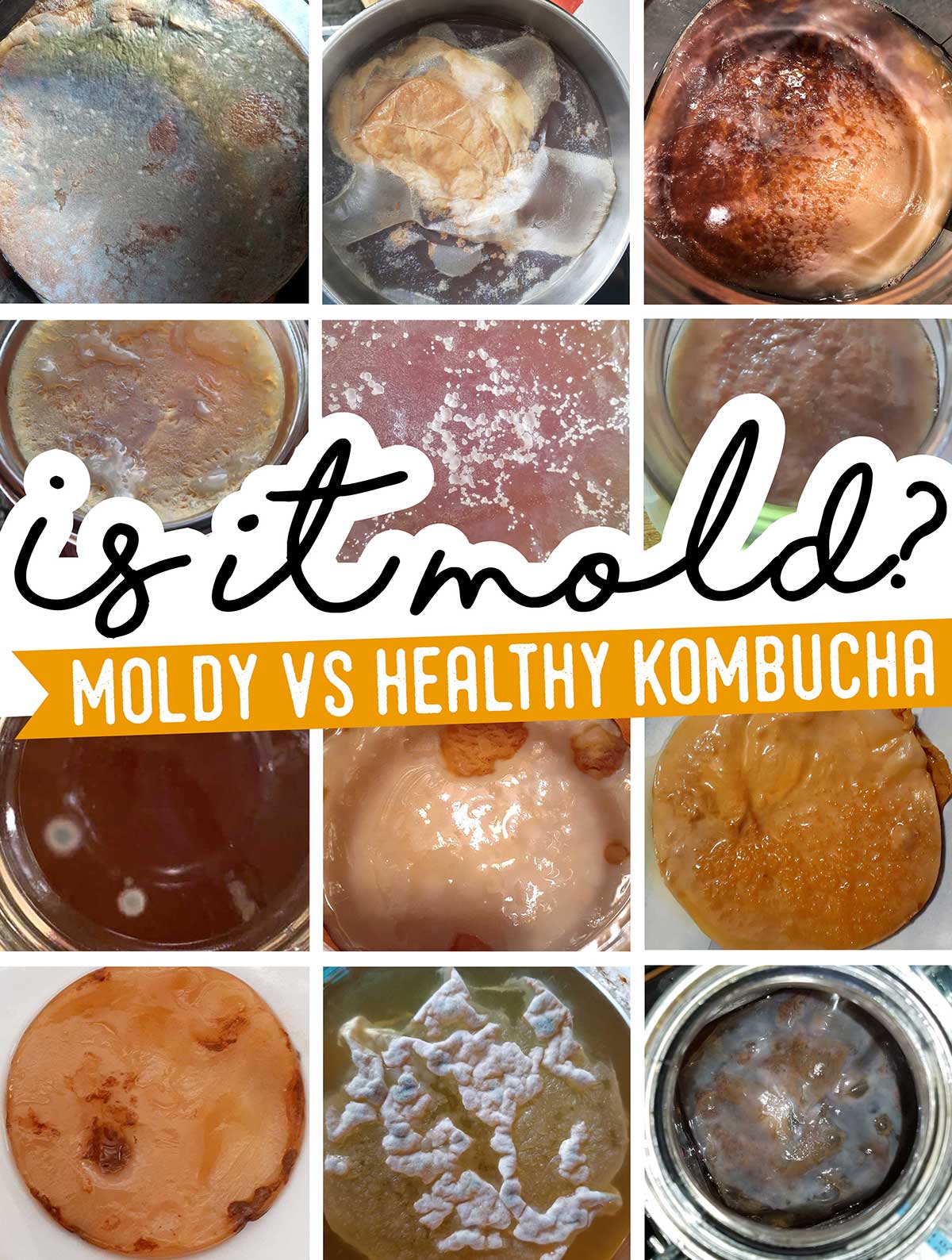
It’s every kombucha brewers worst fear…mold. But is it really as scary and world shattering as people seem to believe? No.
The thing is, kombucha mold is totally avoidable, and the chances or contracting mold are quite low if you’re brewing kombucha properly.
What is kombucha mold?
Kombucha mold is simply an overgrowth of bad bacteria or fungus. It isn’t much different than the mold that might grow on an old loaf of bread.
And while you shouldn’t drink any kombucha that has been in contact with mold (just as you wouldn’t eat that moldy bread), it’s not the end of the world!
What does kombucha mold look like
Though the chances are low, if mold is going to happen it will likely be in the first fermentation, when the kombucha acidity isn’t high enough to fend off the bad bugs. Once kombucha is bottled in the second fermentation, the acidity of the brew should prevent mold from growing.
While there are many different strains of mold that can grow – each with their own unique appearance – they usually have a few specific traits:
- Fuzzy or dry appearance
- Circular shape
- Colors range, but may be white, green, black, or blue
- On the surface of the kombucha (most mold needs air to survive)
Here are a few photos of kombucha mold for your reference. (Have a moldy SCOBY photo and want to include it in this gallery to help more people ID potentially moldy kombucha? Email me!)
(If your kombucha looks odd but it doesn’t look like mold, you could have kahm yeast.)
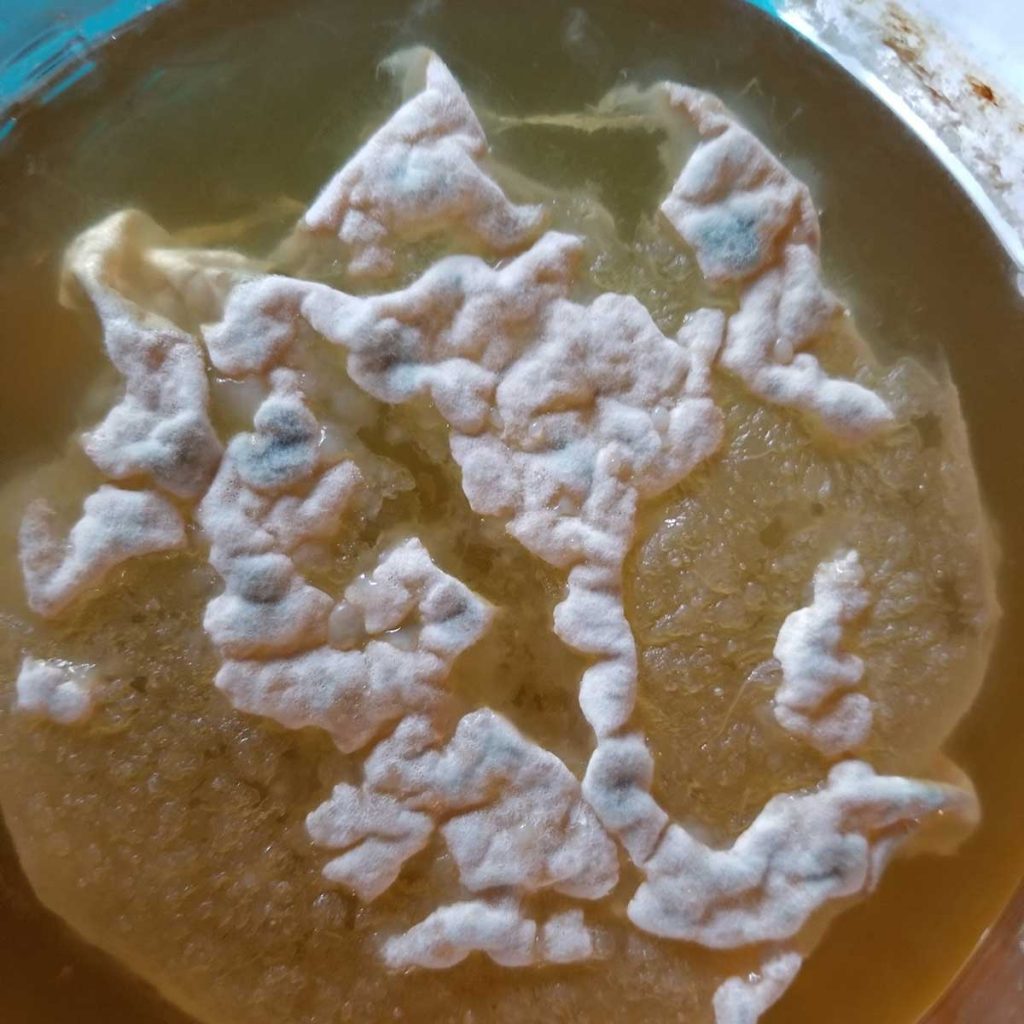
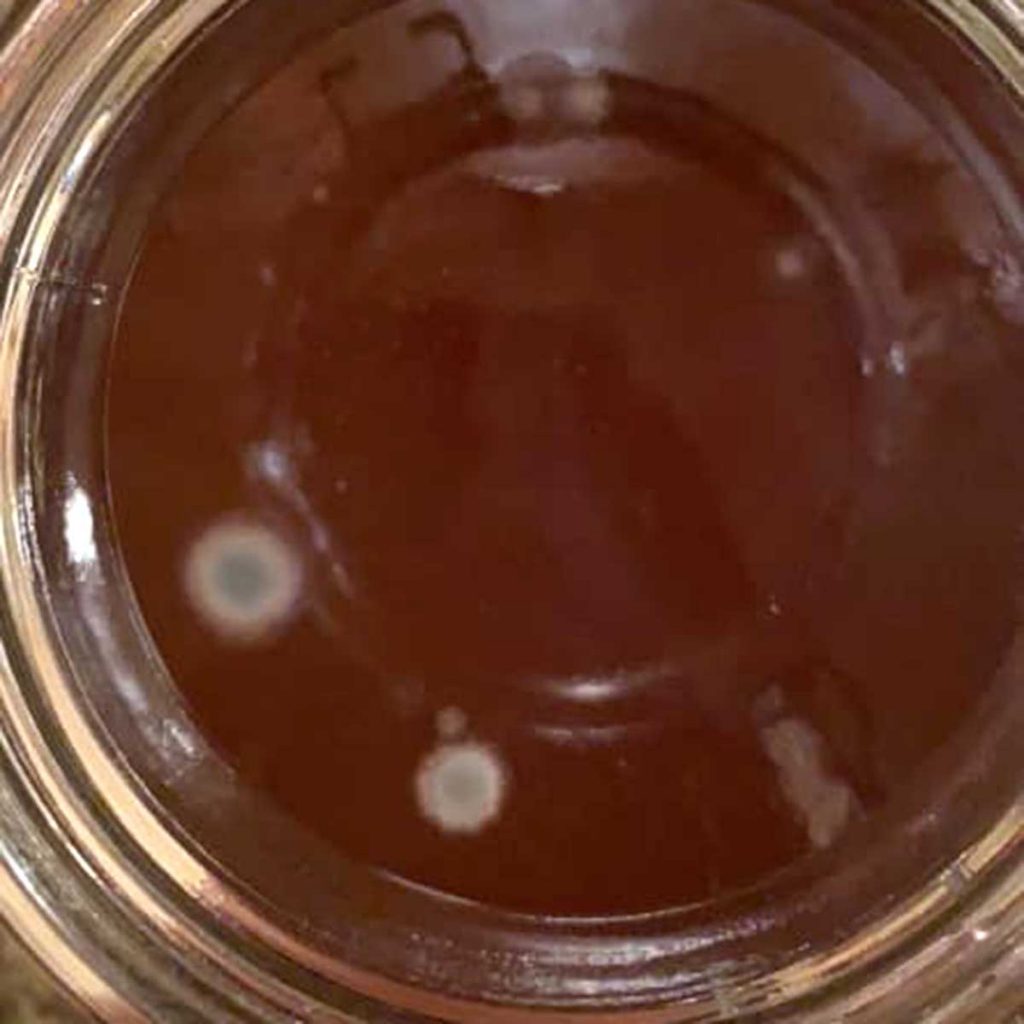
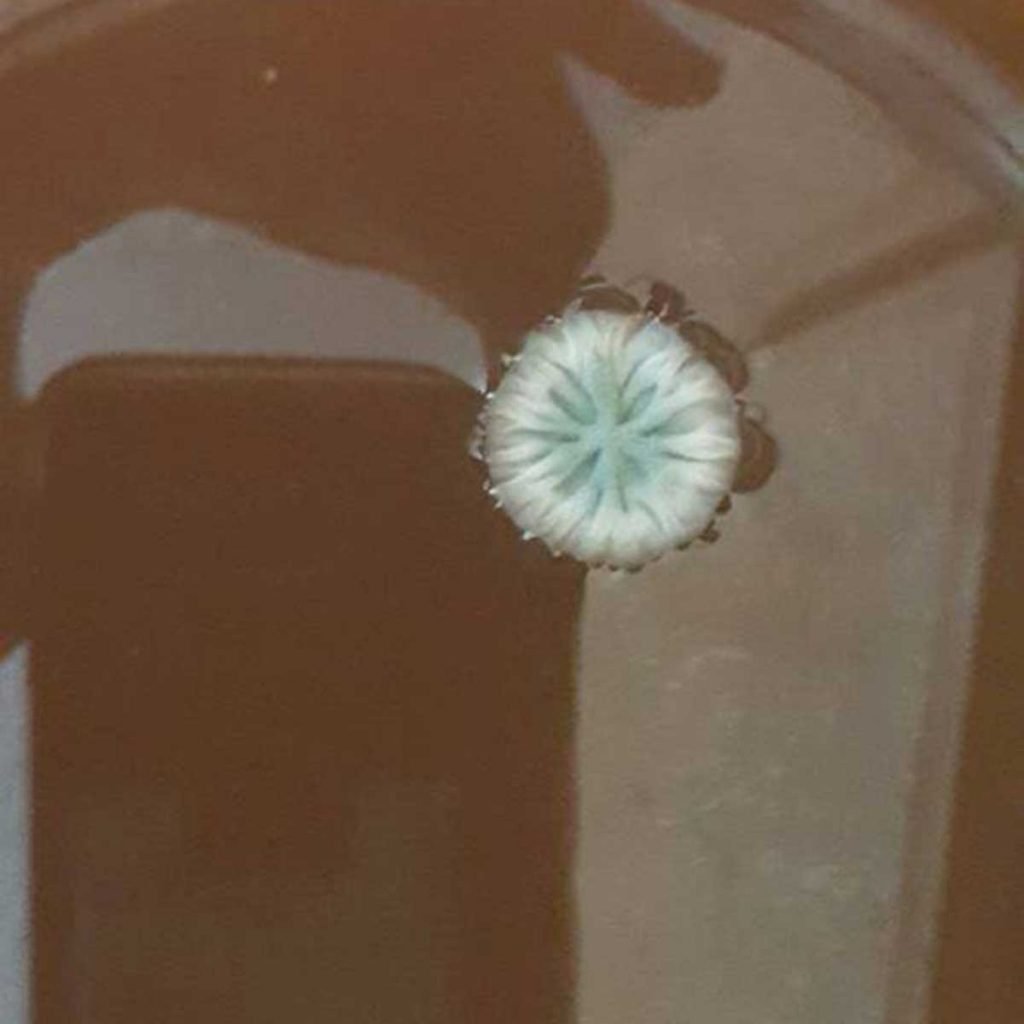
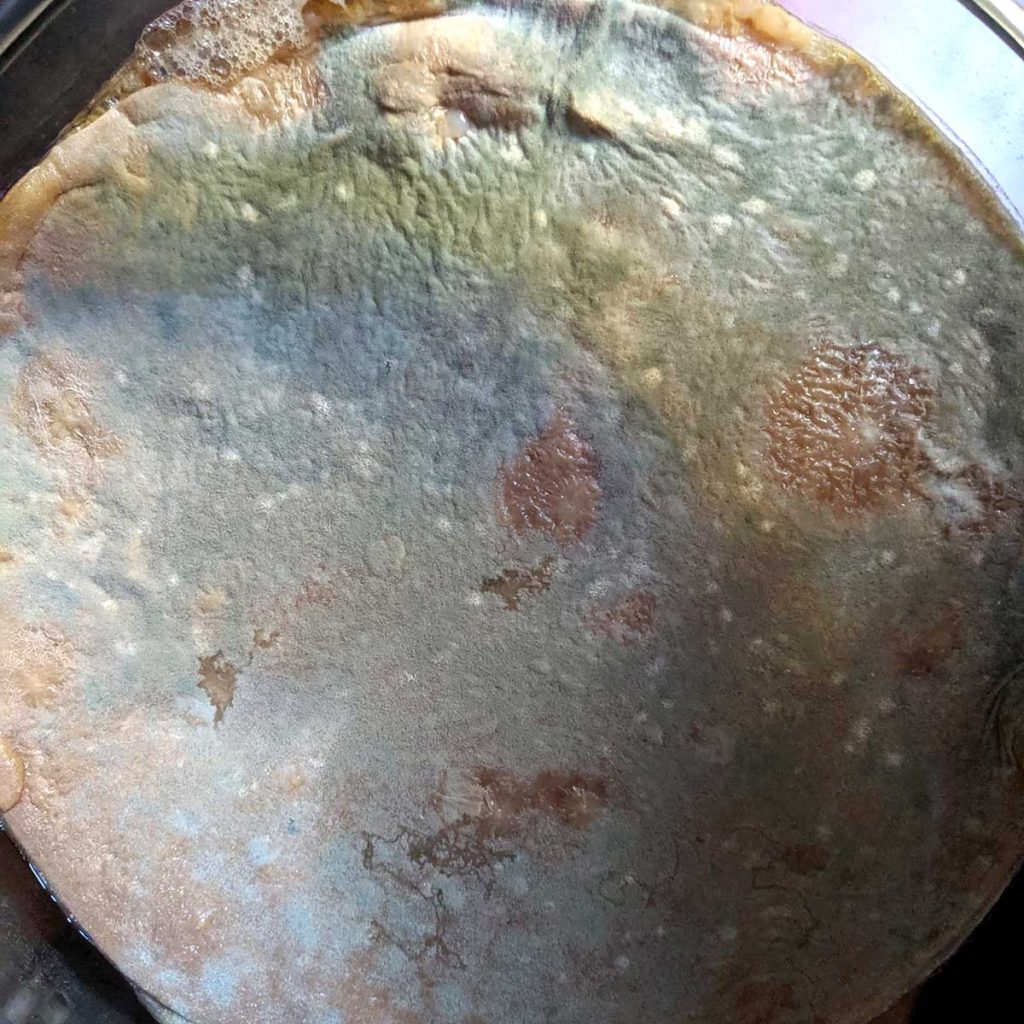
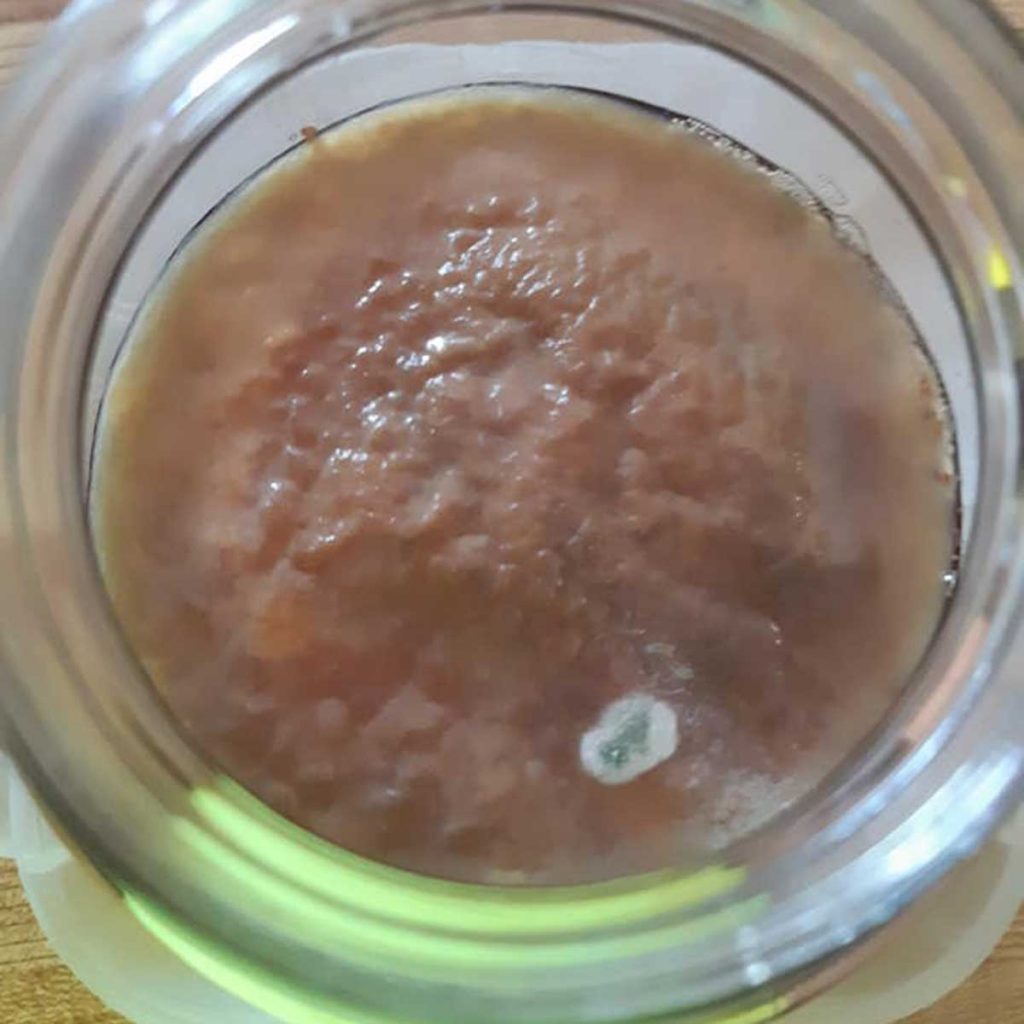
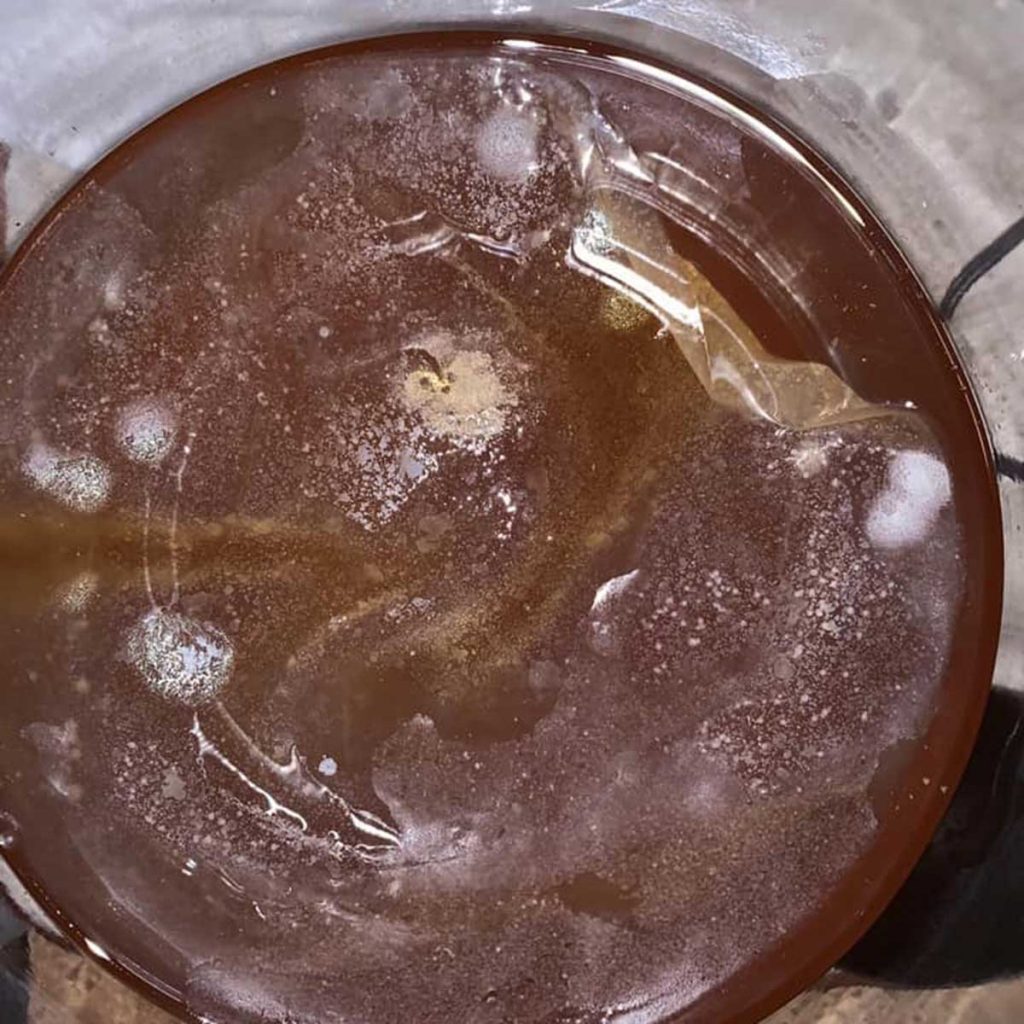
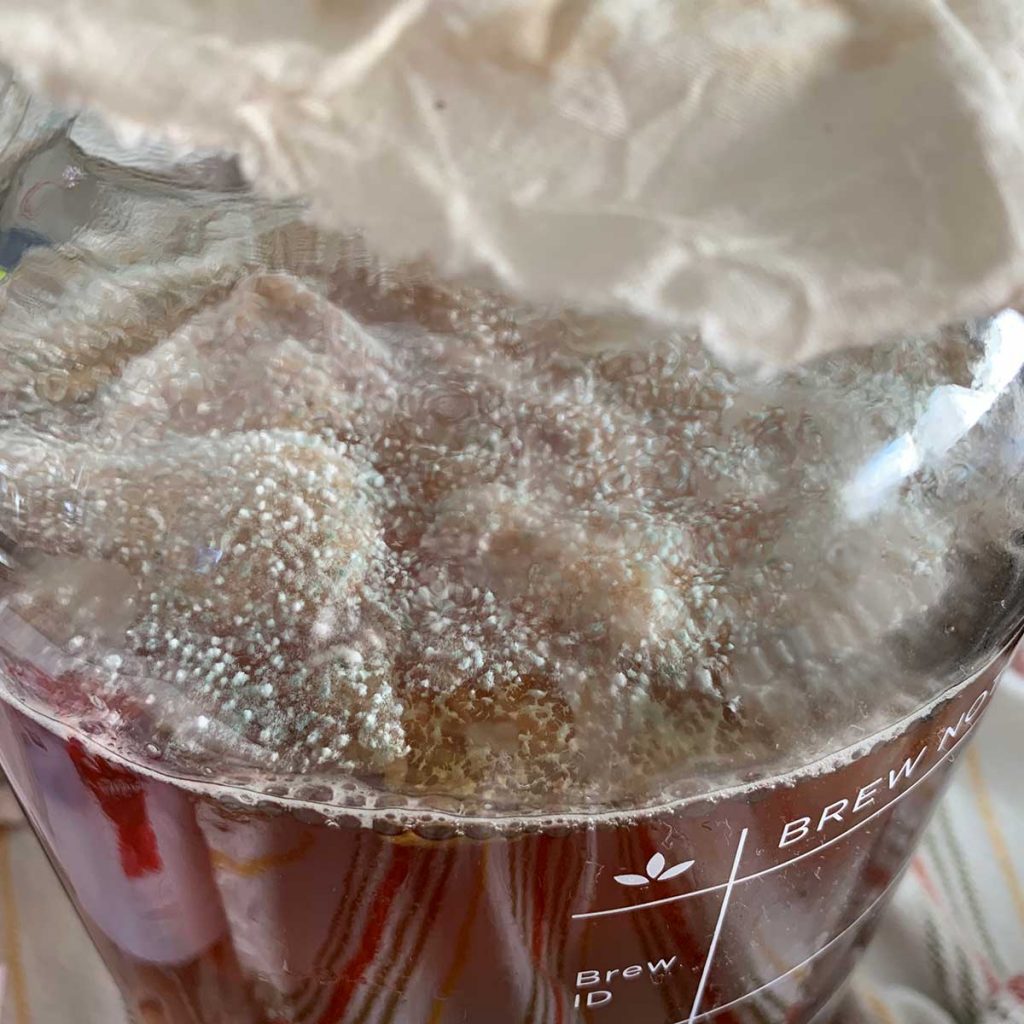
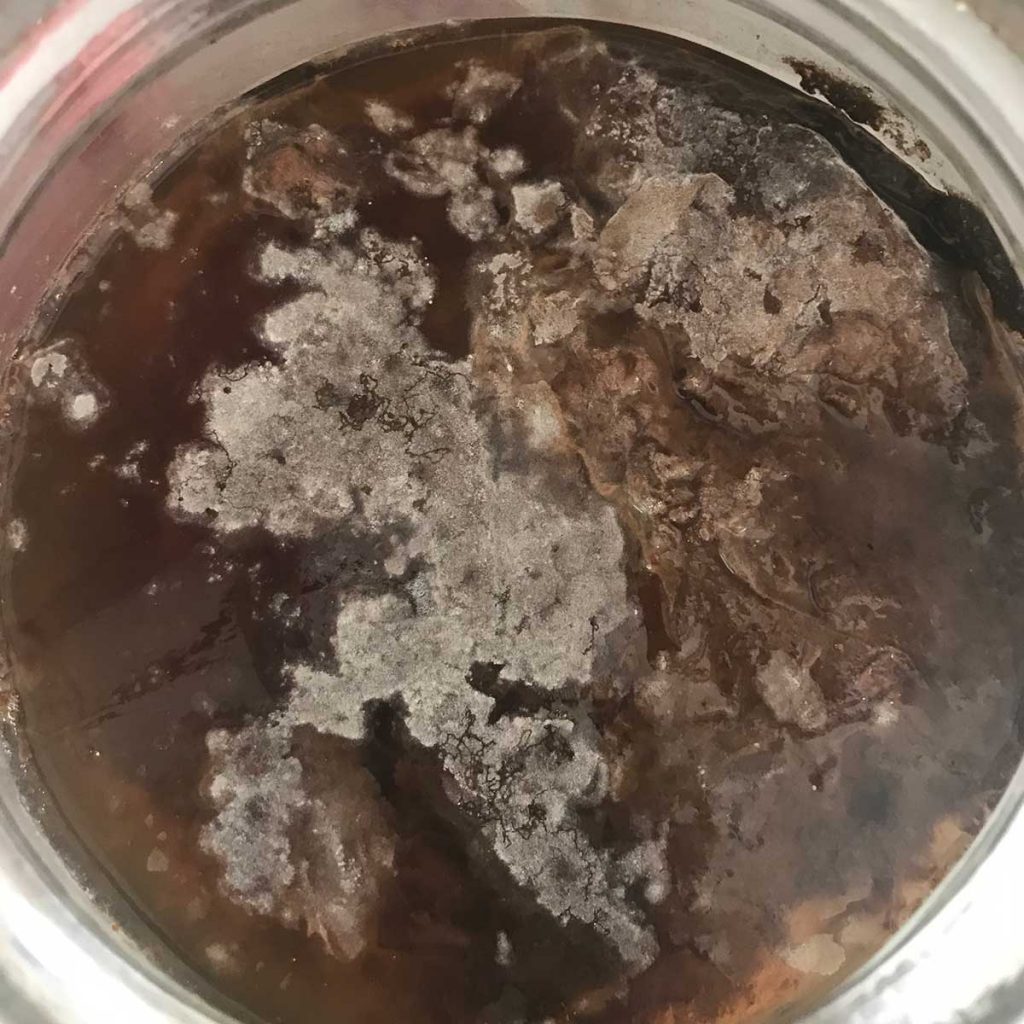
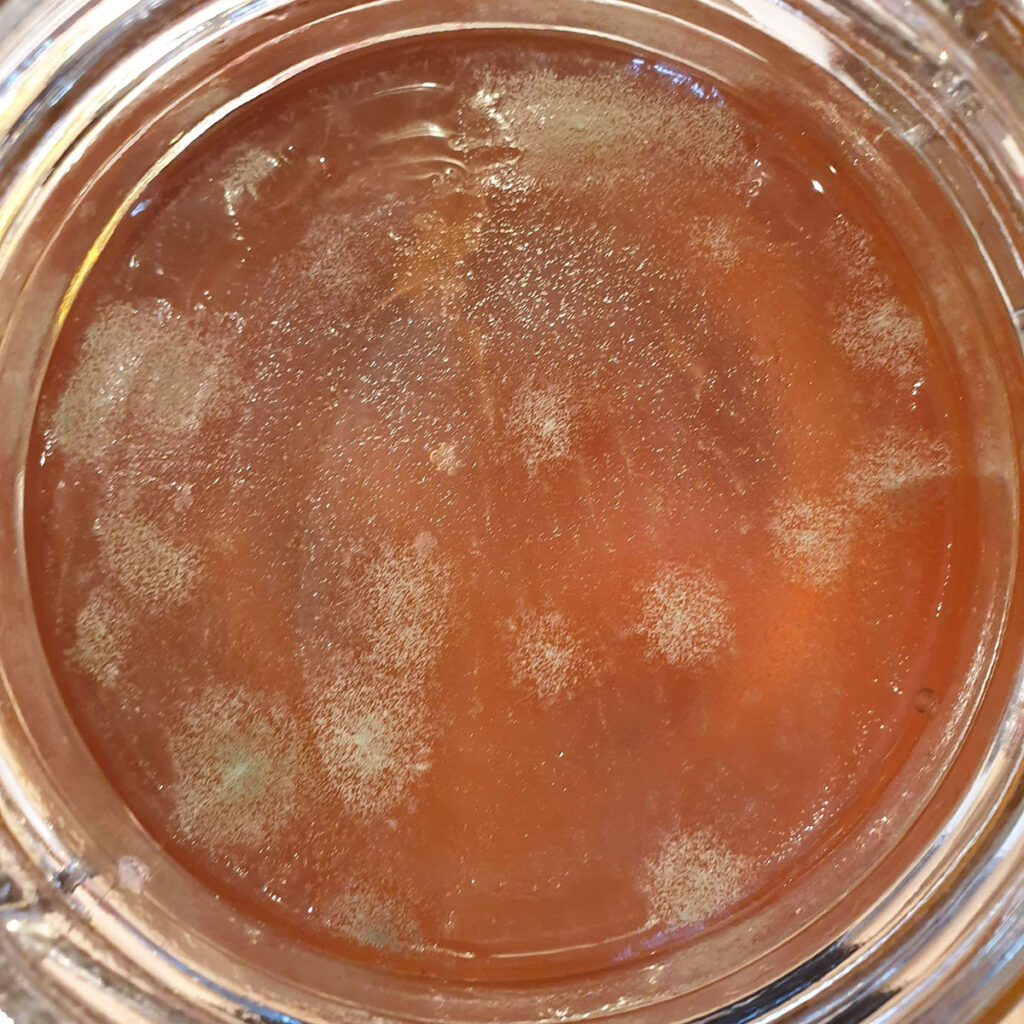
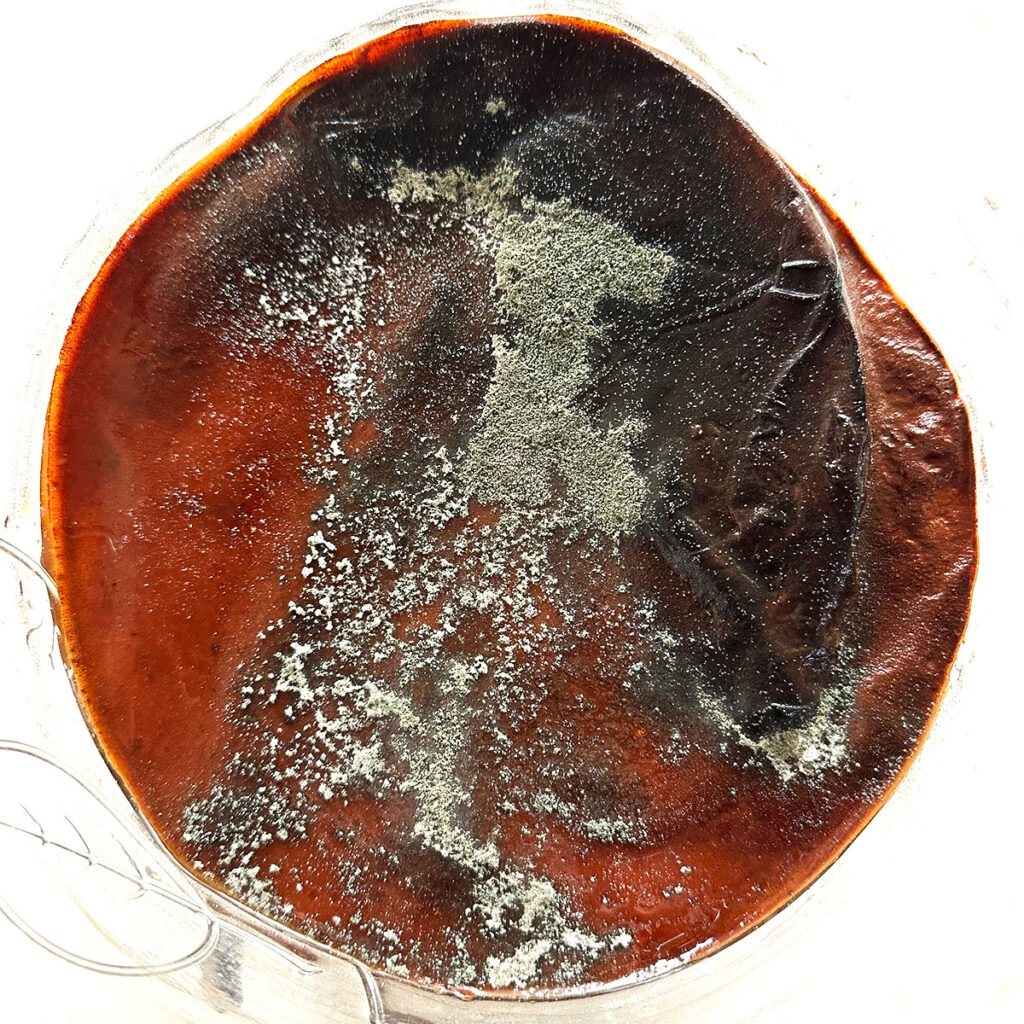
How to prevent mold in your kombucha
If you got mold, it’s because something went wrong in the process of brewing. Here are a few common reasons you may have got mold:
Not enough starter: If you didn’t use enough starter kombucha, or the starter wasn’t strong, the kombucha may not have been acidic enough to defend itself from mold strains. You can use pH test strips to ensure your starter kombucha is strong and acidic (should be between 2.5 and 3.5).
Temperature too low: If the temperature is too low where you’re brewing, or if you put your first fermentation / SCOBY in the fridge, the bacteria and yeast go dormant. This means they can’t acidify your kombucha, and mold may grow. Never store your SCOBY in the fridge, and ensure you store your kombucha somewhere warm enough to prevent mold.
Supplies not clean enough: Mold spores may have slipped in through your supplies, such as if you used a dirty sponge to clean the jar. Learn to clean your supplies to prevent contamination.
Used the wrong ingredients: Herbal teas and different sugars can weaken the SCOBY over time. Be sure you’re using the best teas and best sugars for kombucha.
Wrong place: Where your fermentation station is located matters! Airborne contaminants from garbage, compost, fruit bowls, or even other fermentation projects (like kefir or kimchi) can contaminate your kombucha. Ensure your kombucha is stored away from these.
What if I’m not sure?
The thing is, kombucha looks weird even under normal circumstance. So what if you’re not sure?
Just give it a few days! If it’s mold, it will grow to look like something in the photos above. If it doesn’t grow, it’s probably just normal, weird kombucha stuff.
Here are some examples of normal kombucha SCOBYs for your reference. Not sure if yours is moldy or not? Feel free to ask in our Facebook group!
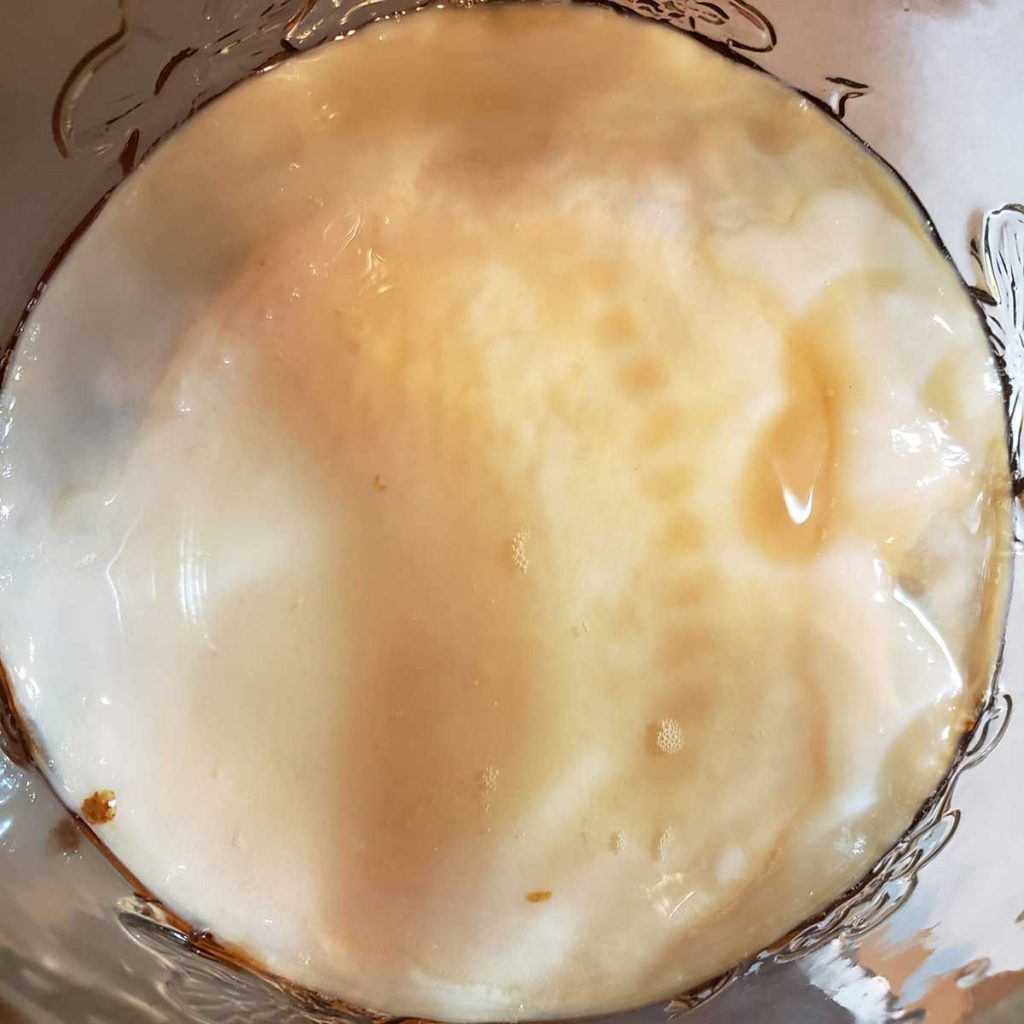
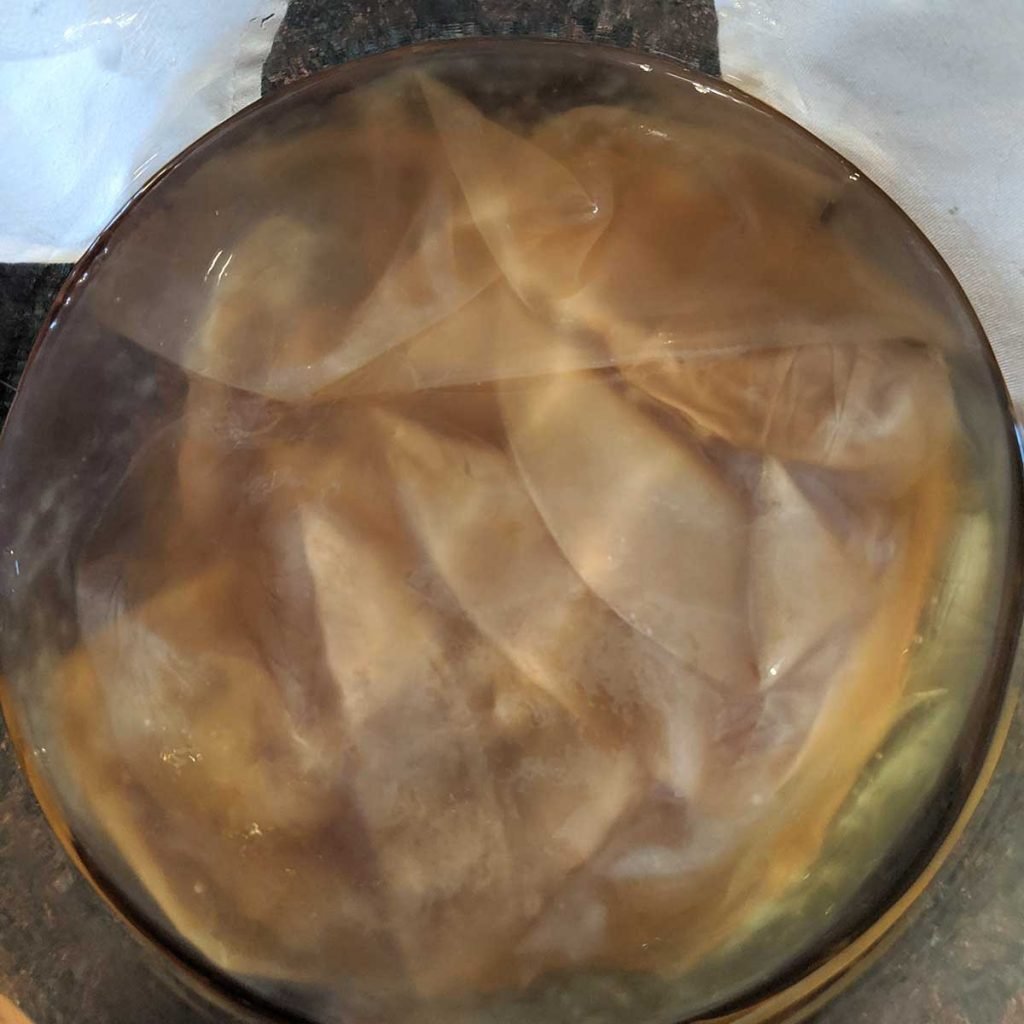
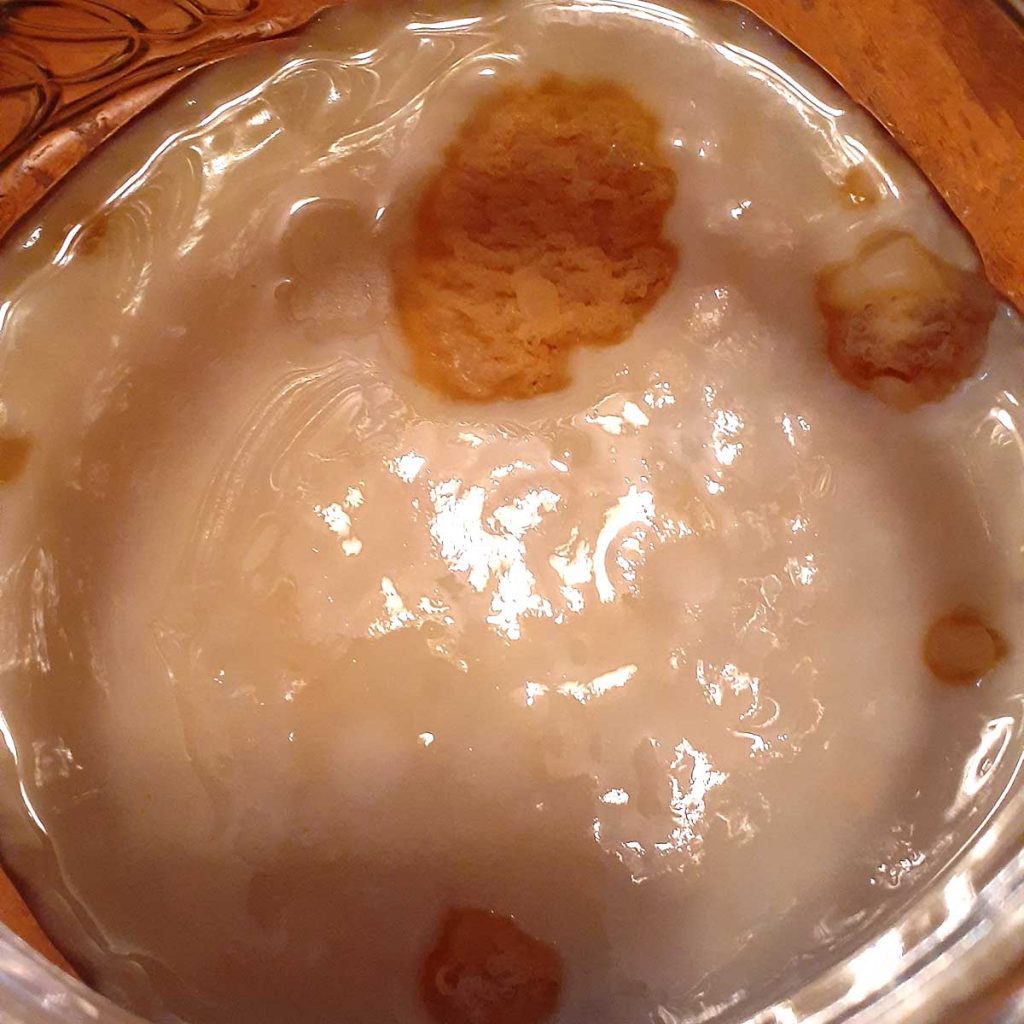
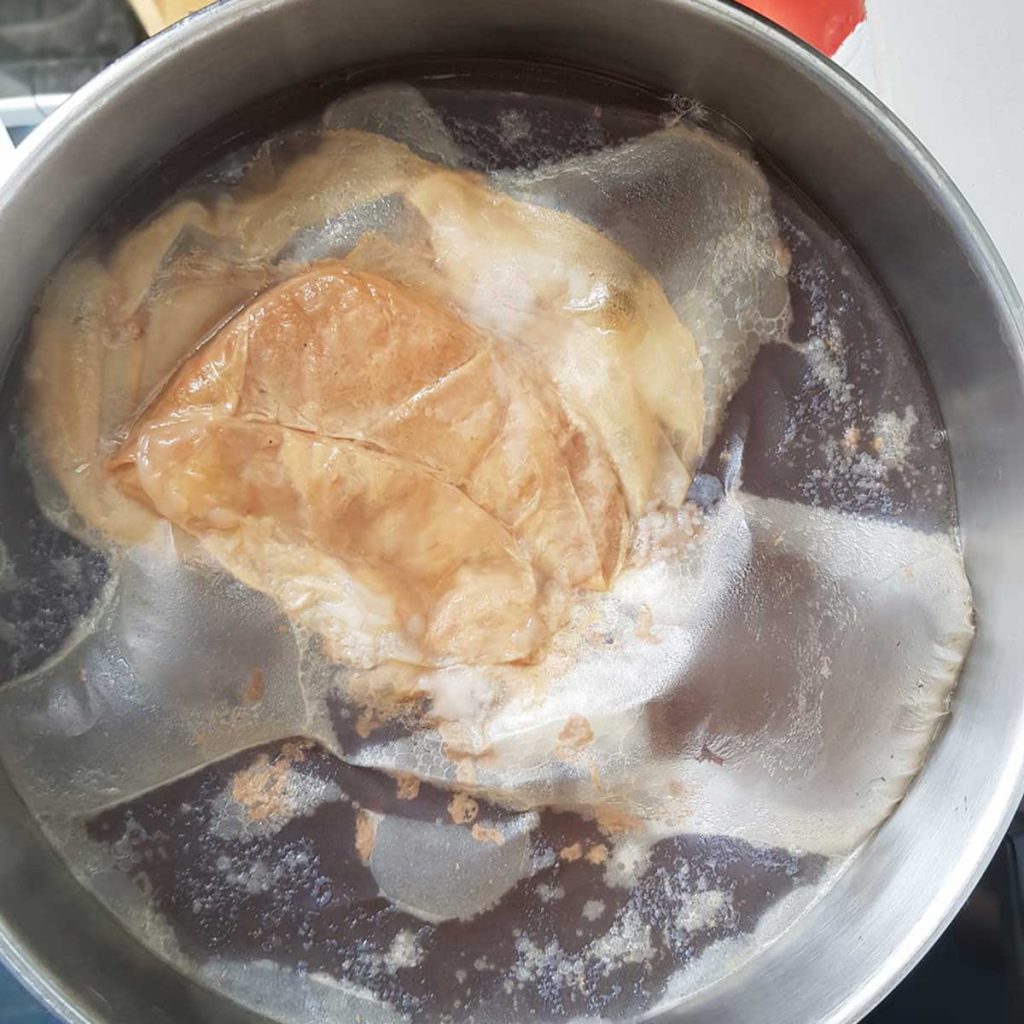
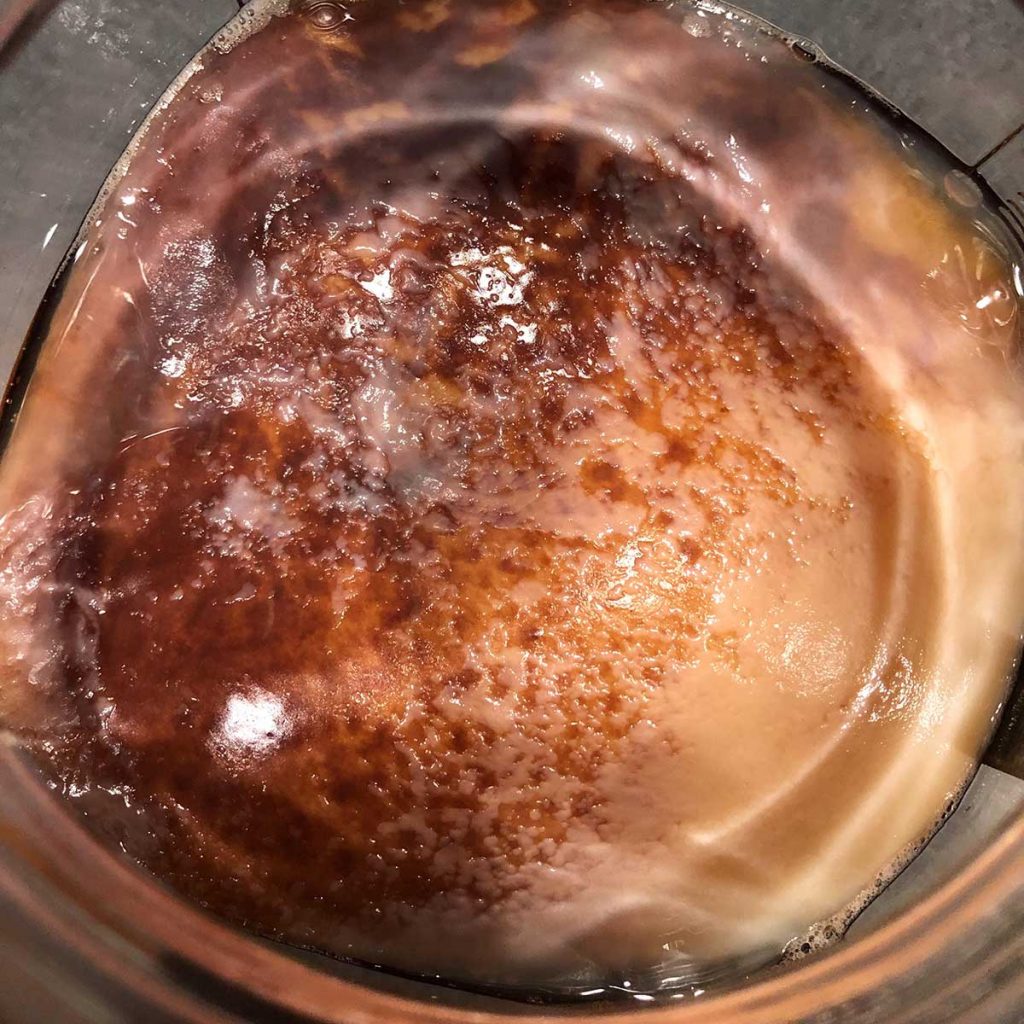
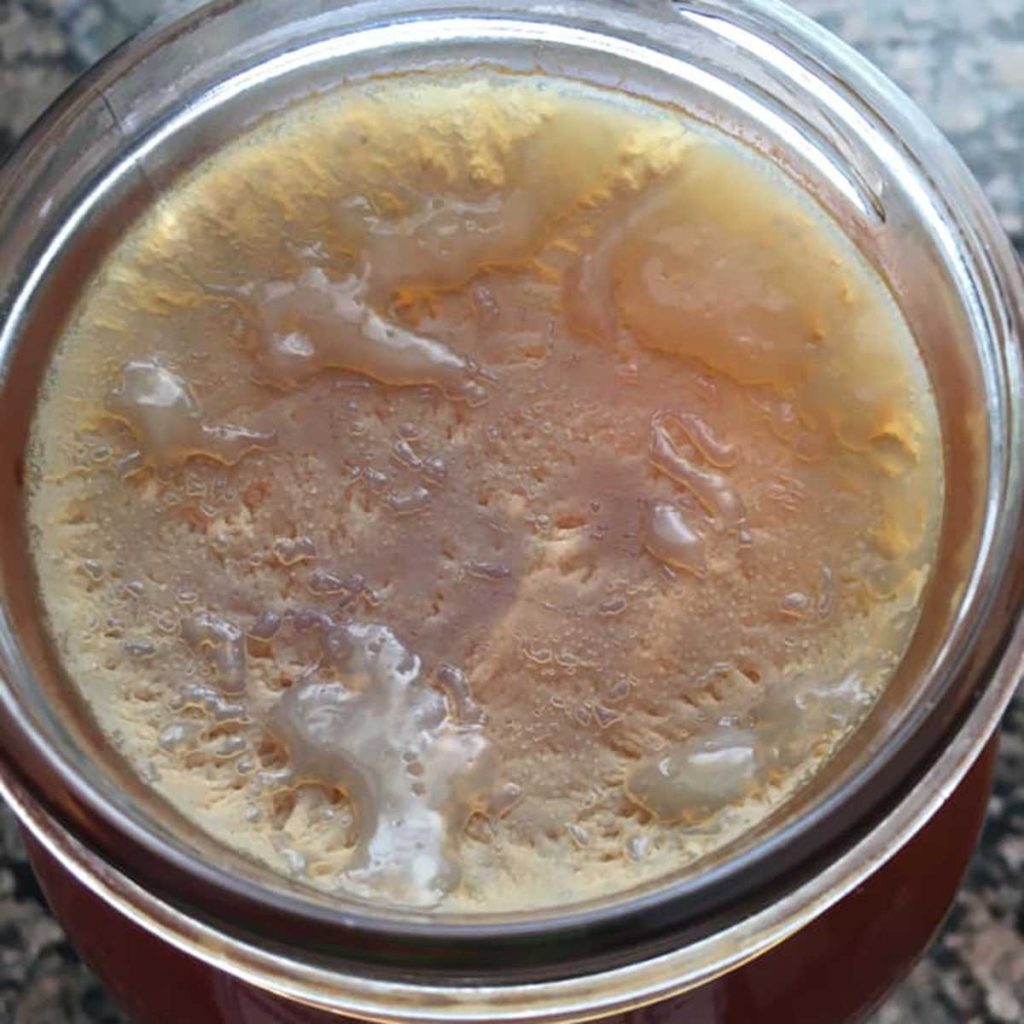
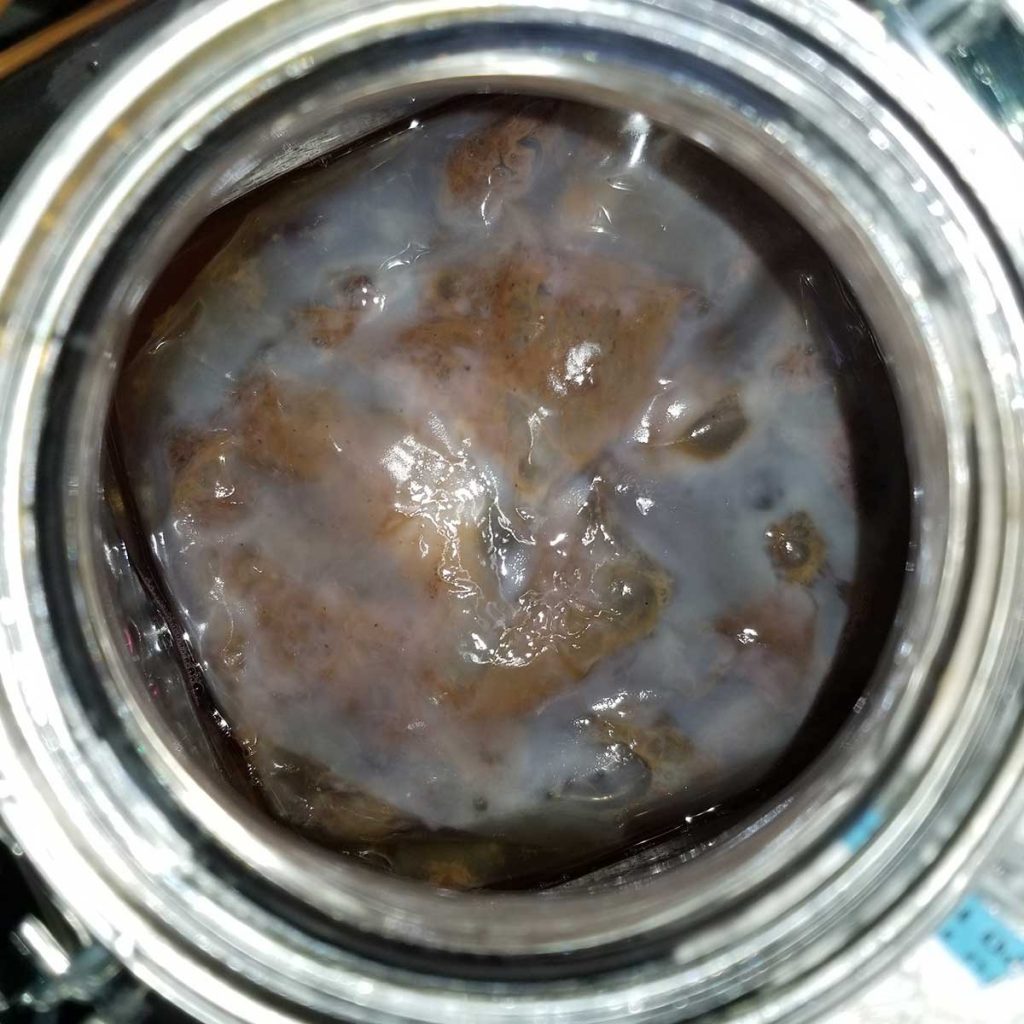
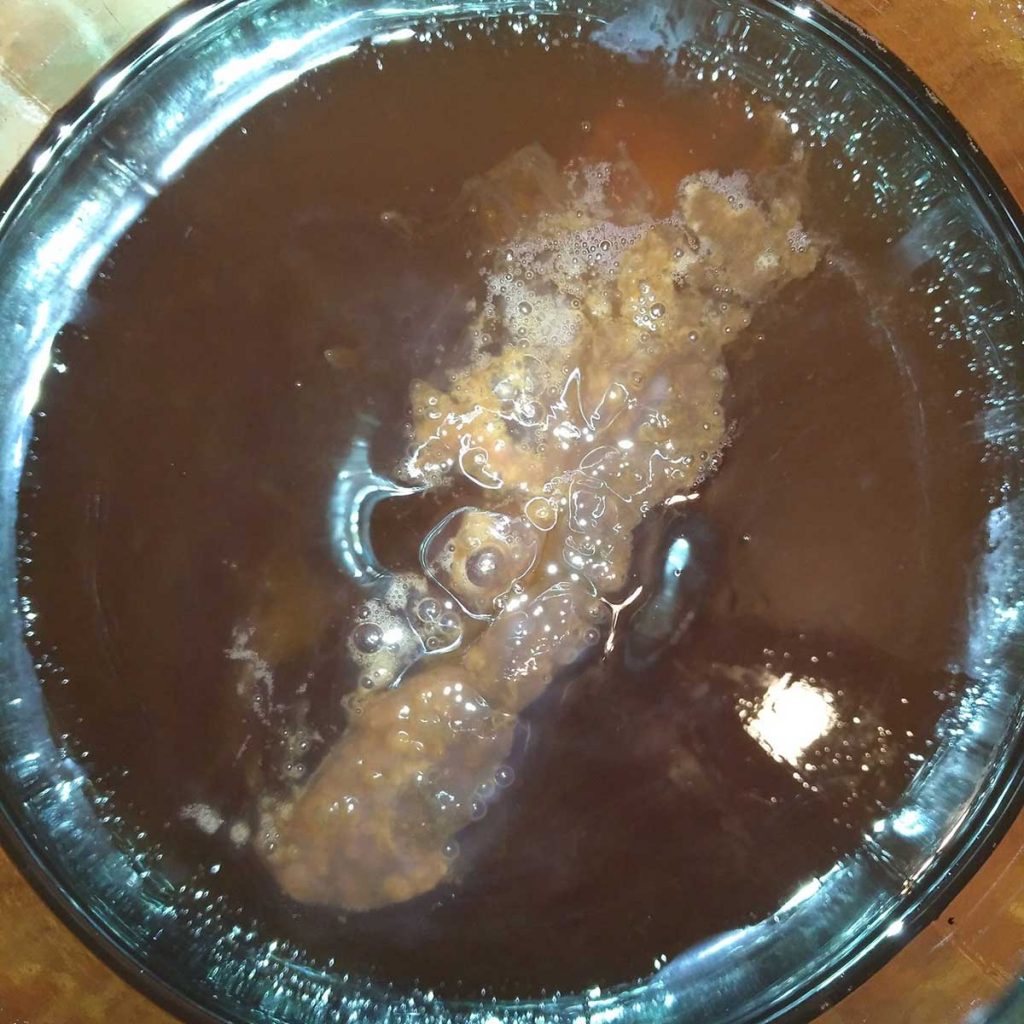
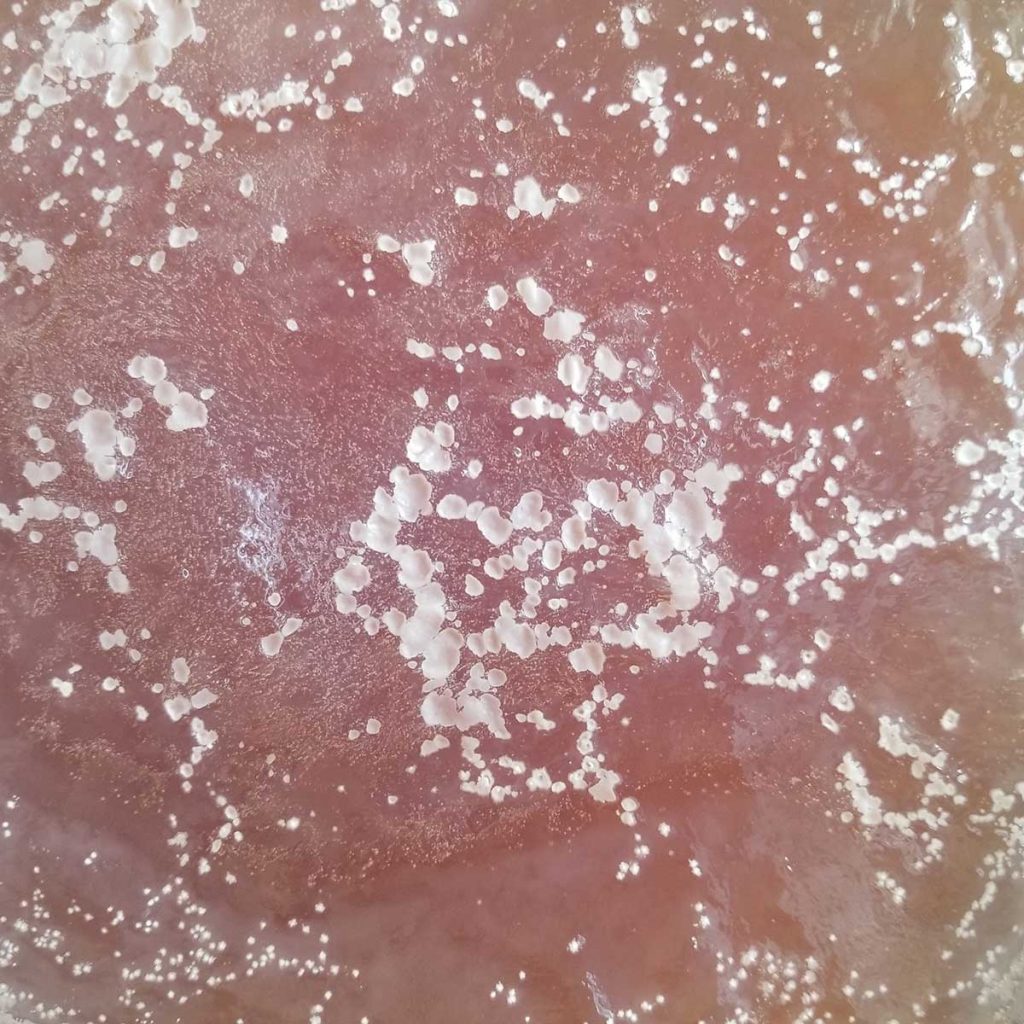
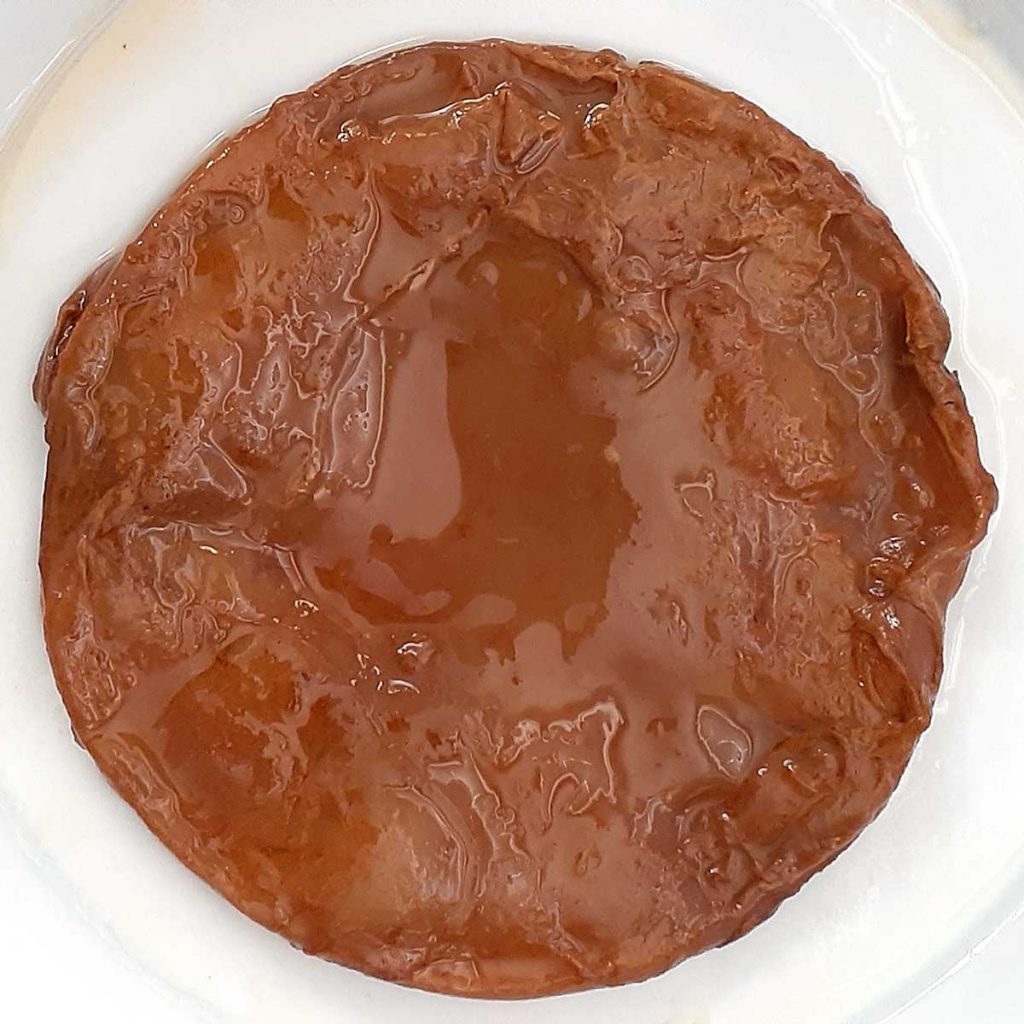
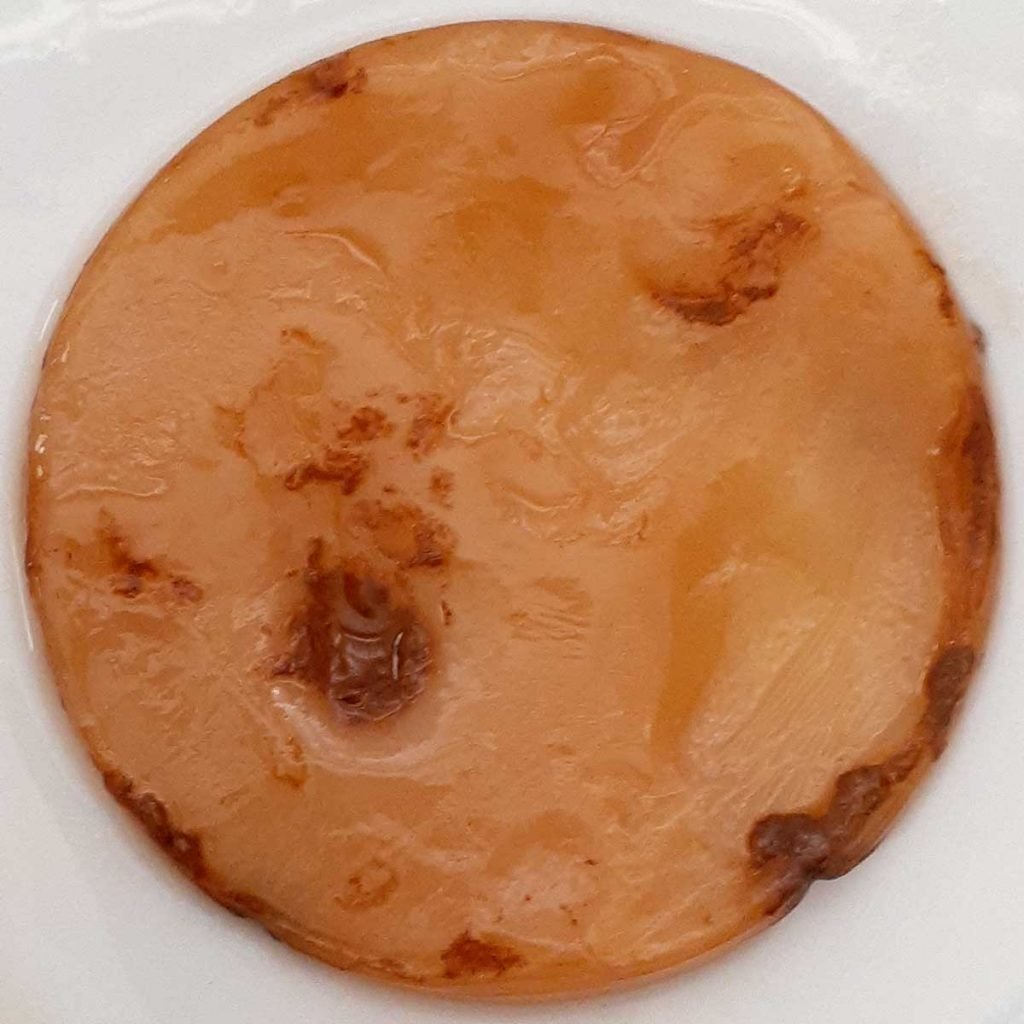
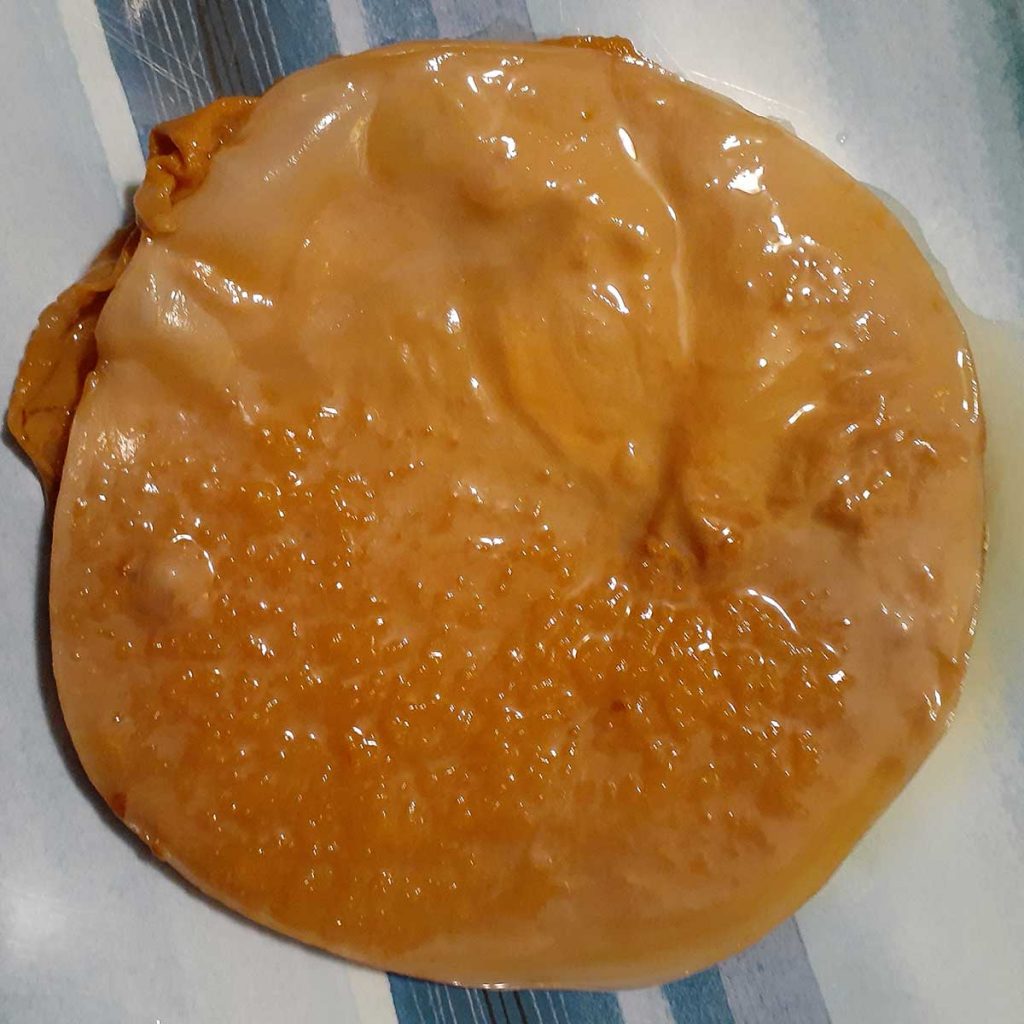
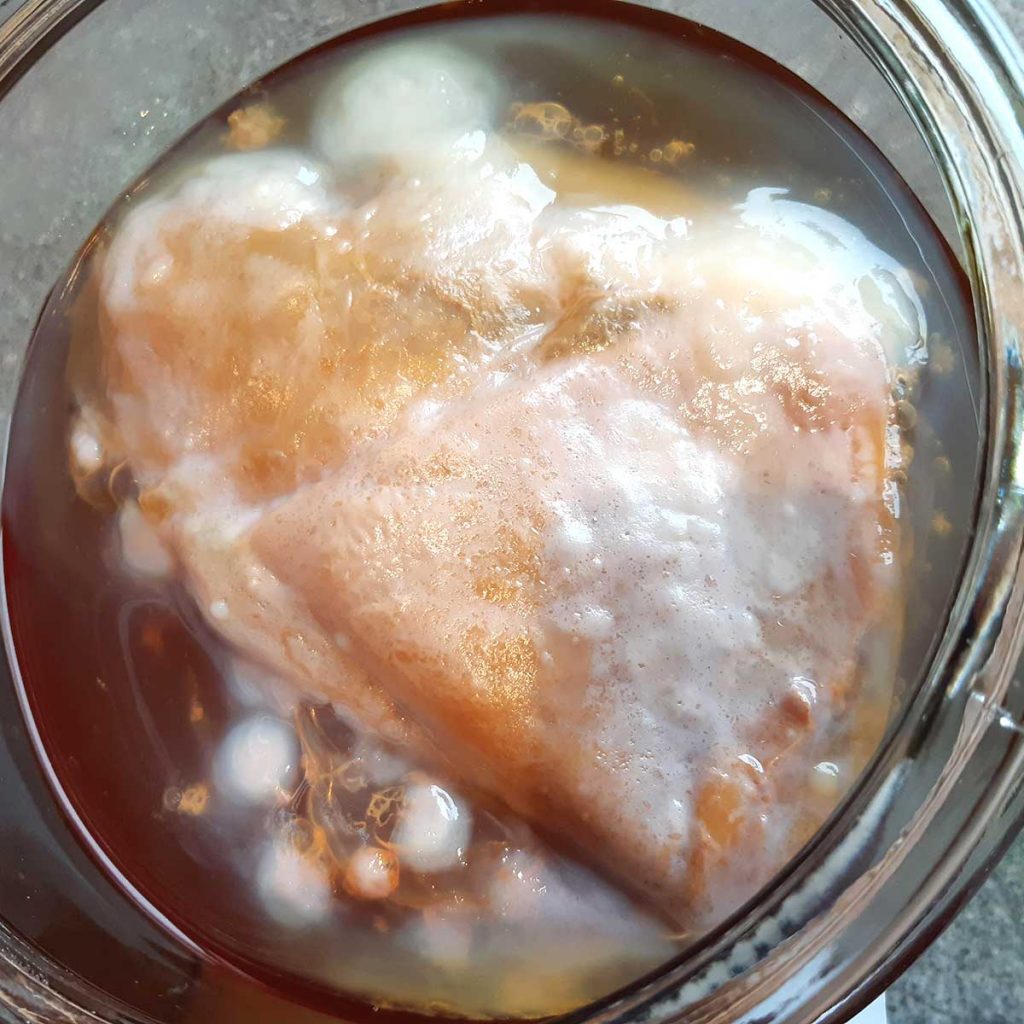
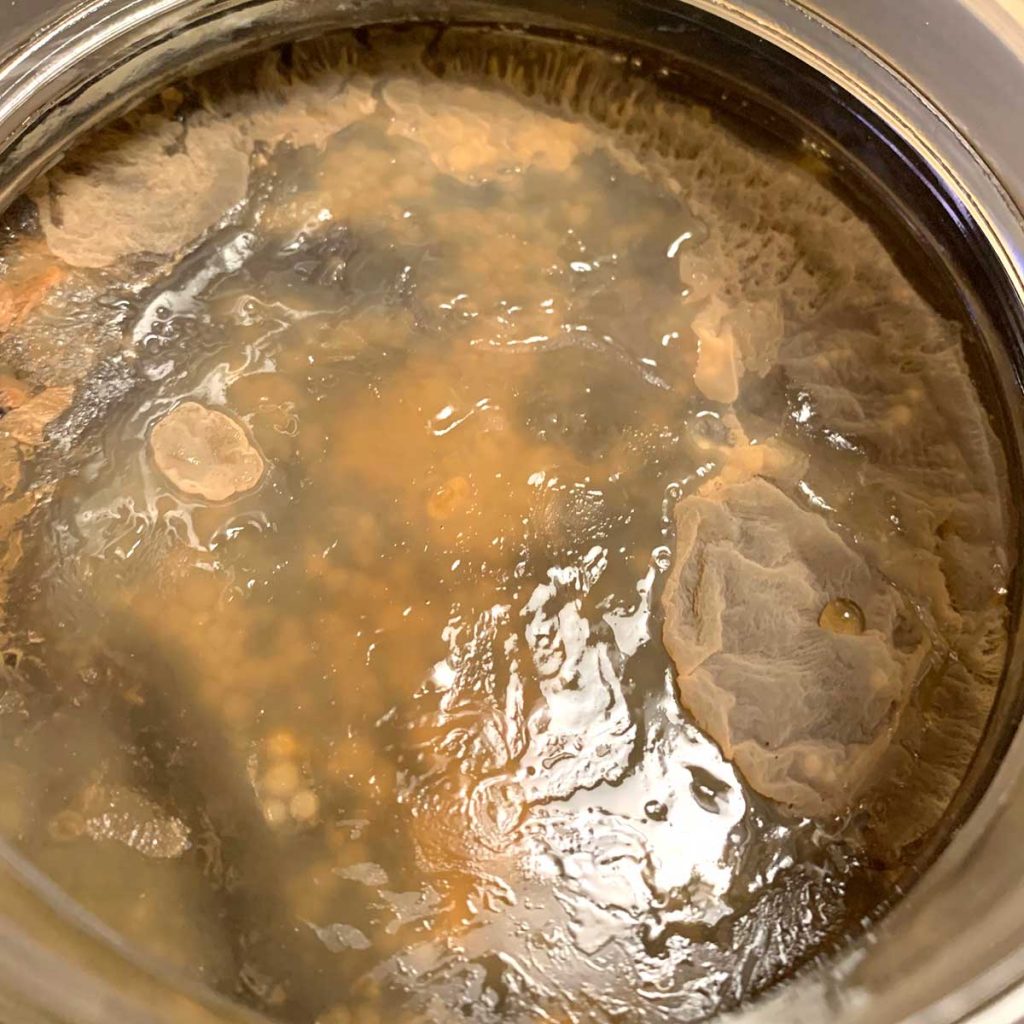
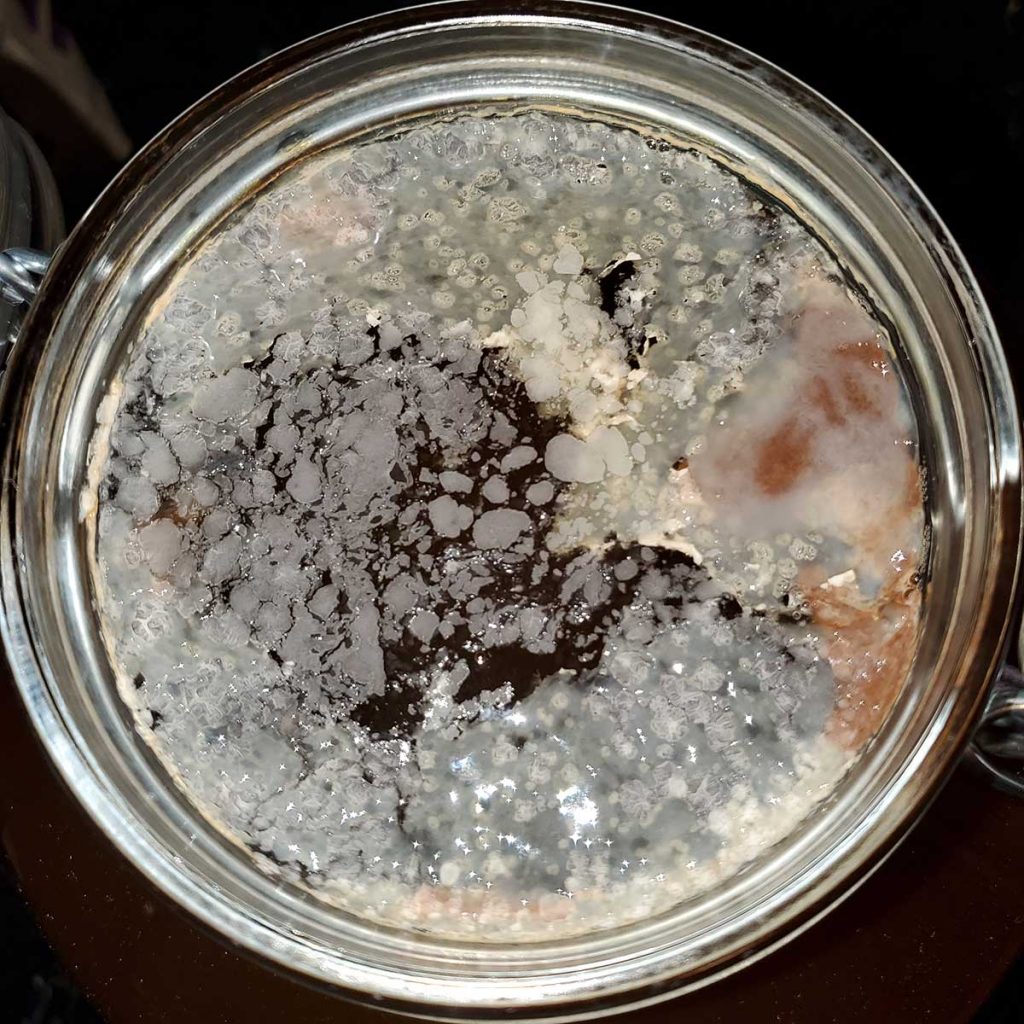
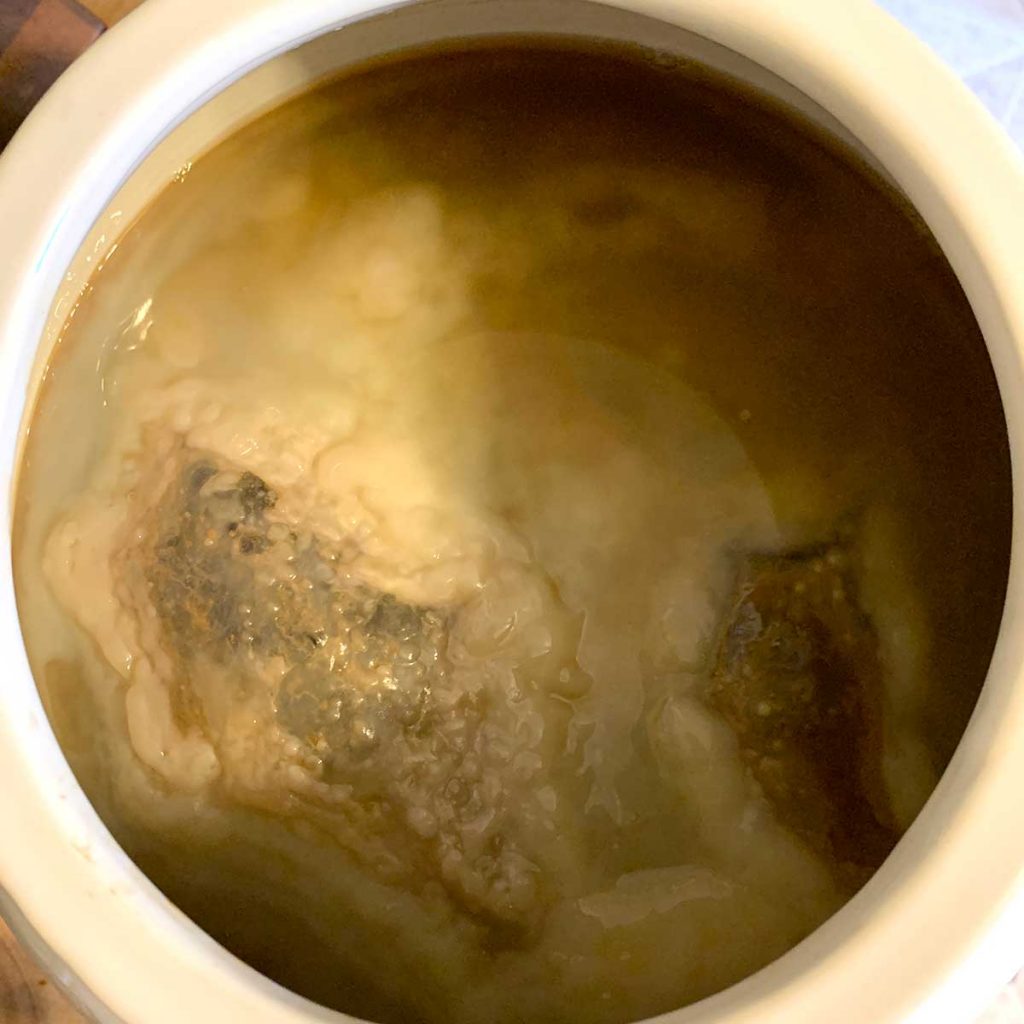
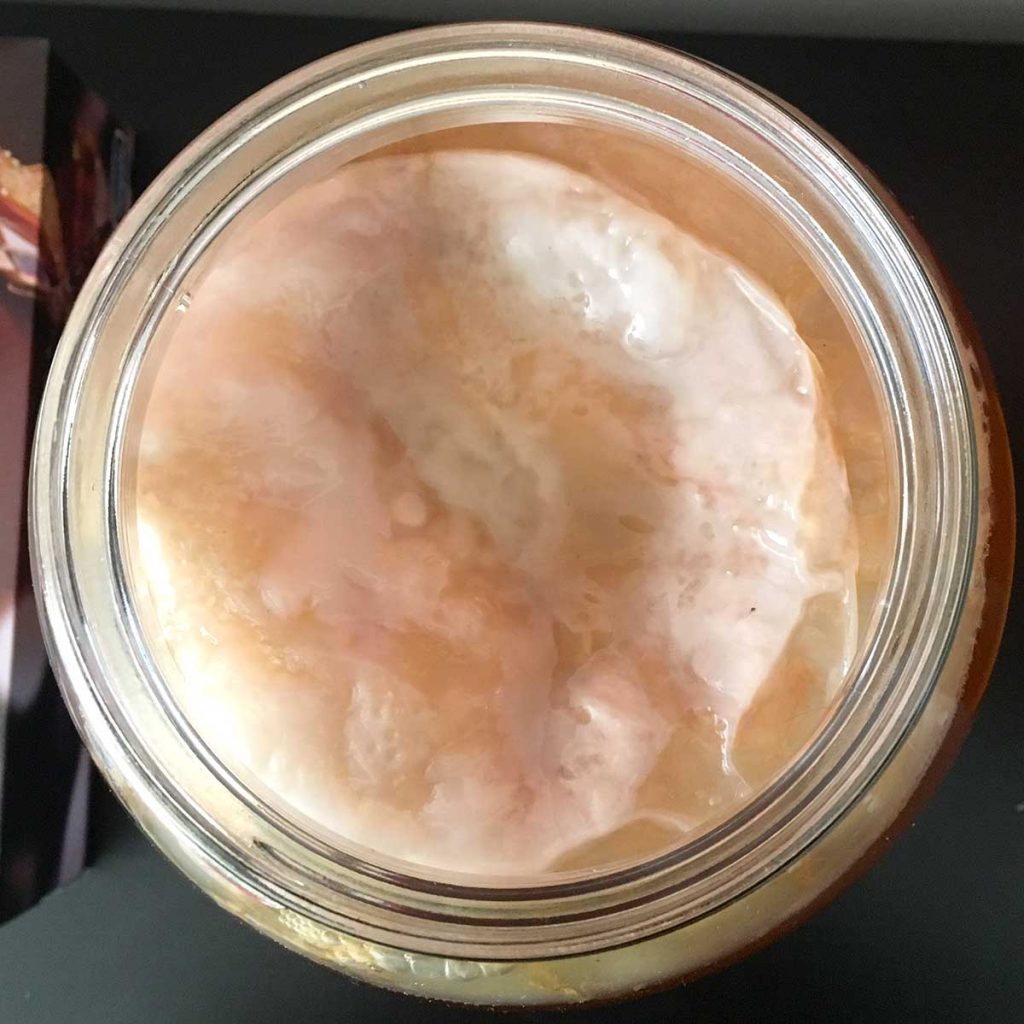
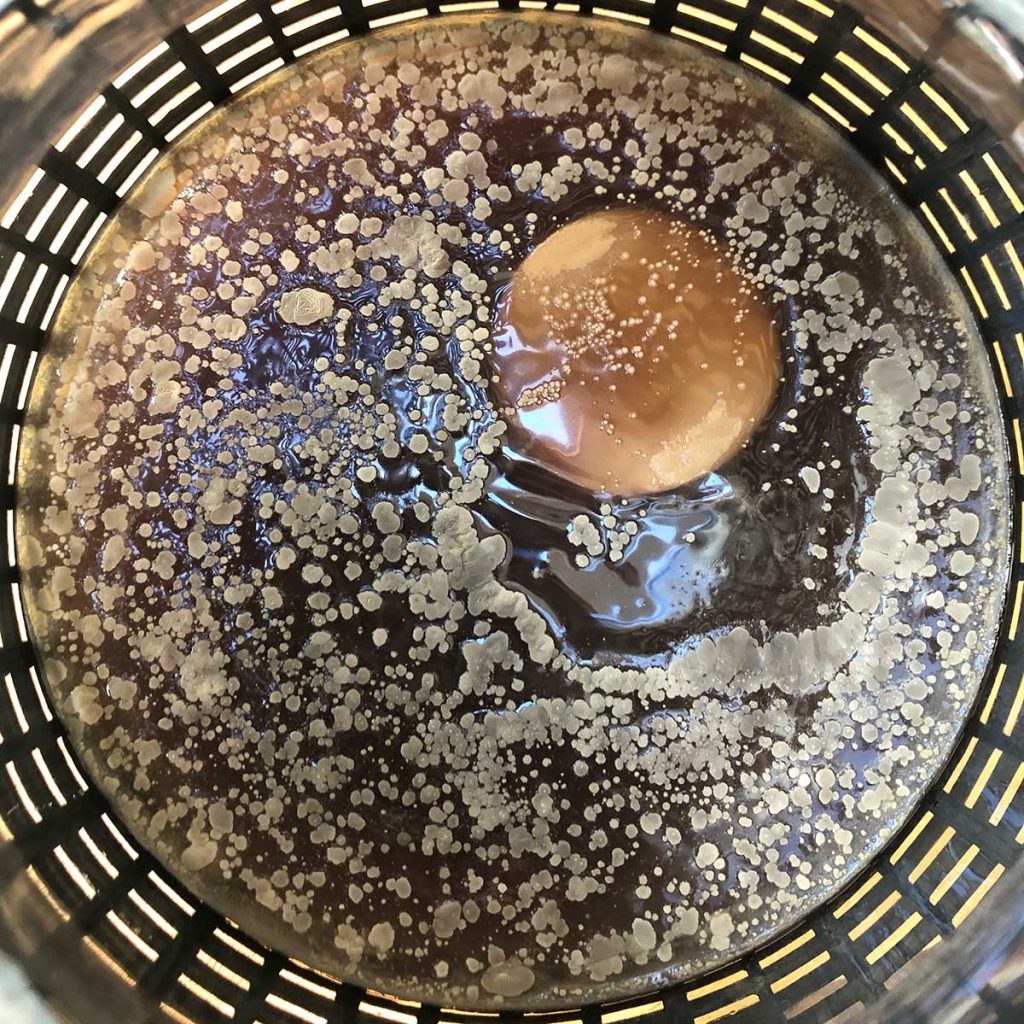
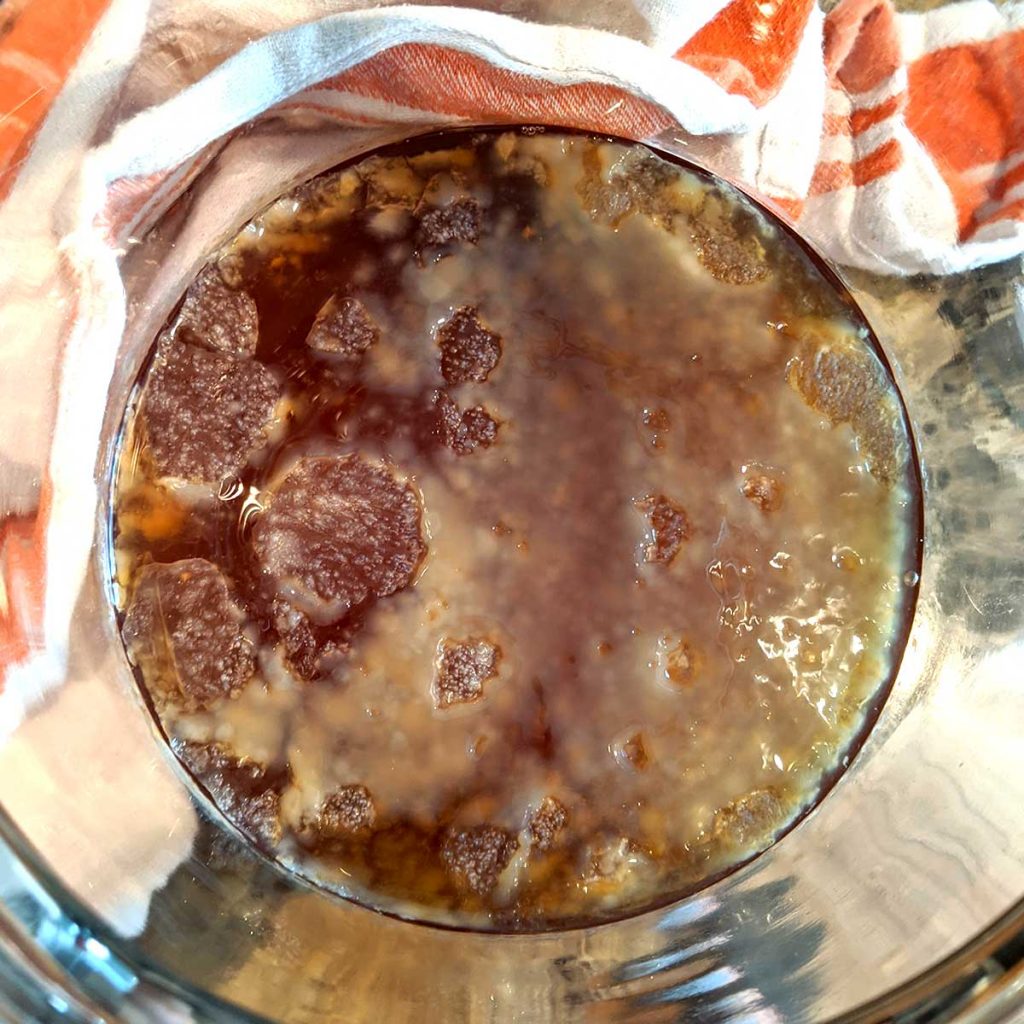
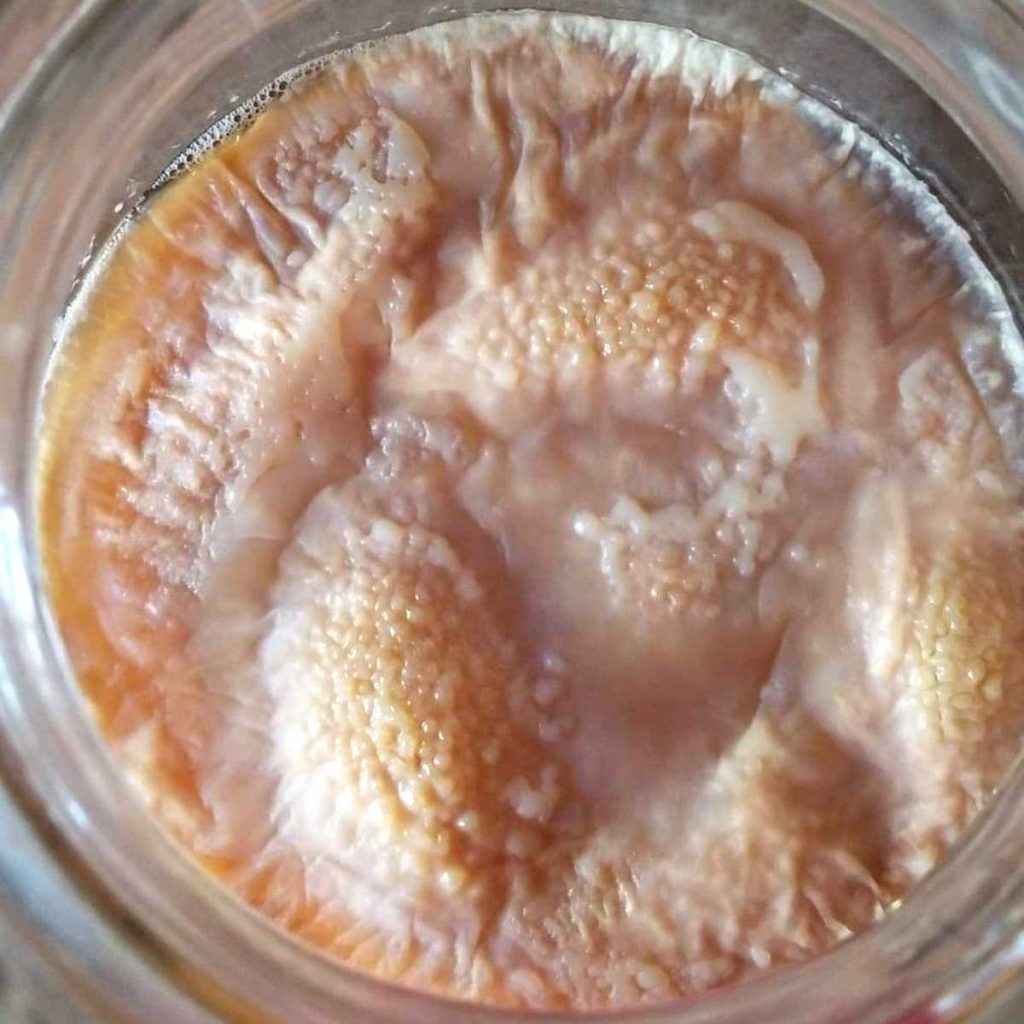
You got mold, now what?
First off, my condolences. Now it’s time to make your peace and throw it all away. The SCOBY, the tea, everything. There may be microscopic mold spores that you can’t see in the kombucha, so you’ll need to toss out the whole batch.
Next step, sterilize everything very well using boiling water and distilled white vinegar. (Here’s how I sterilize my kombucha supplies).
Finally, learn from your mistakes and move on. Figure out where you may have gone wrong so you can prevent mold from ever happening again. Can’t figure out what went wrong? Read the kombucha master recipe again closely in case you missed something. And feel free to email me with your questions!


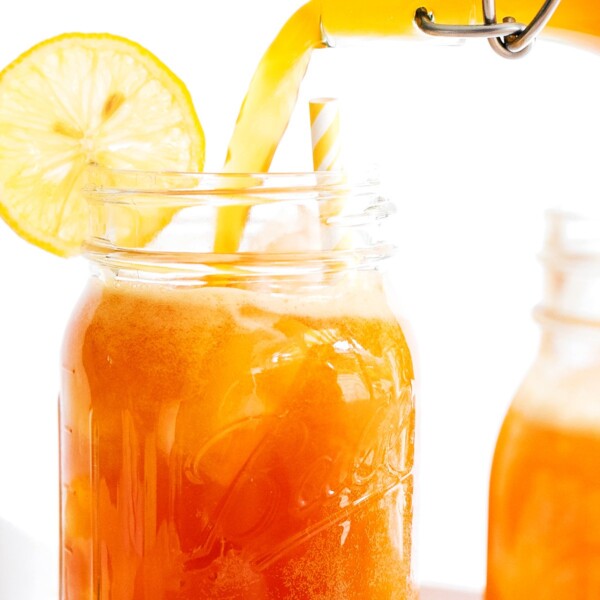
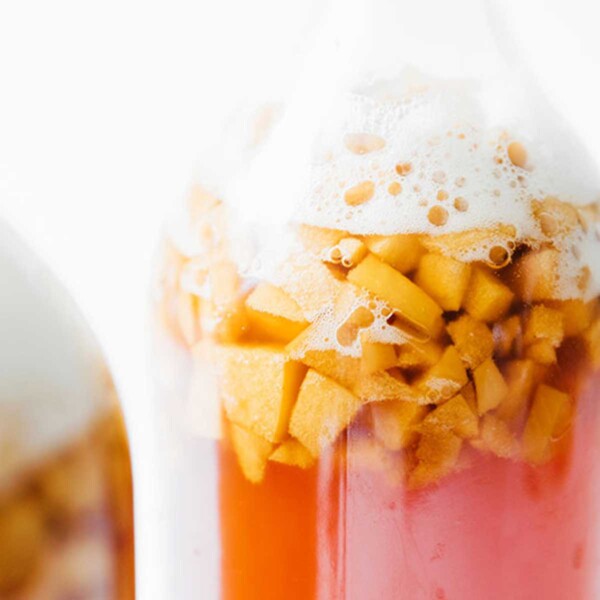
Hi Sarah! I just made my very first batch of kombucha and I am in the second fermentation stage. I got a scoby and starter from a friend to start my first fermentation, and at the end of 8 days, I had a beautiful new scoby on top! A few questions: for my second batch, I put the initial scoby and my new scoby back in my jar, along with starter liquid. Is it correct to use both scobys for new batches? Second, my new scoby is no longer floating on top, but has sunk to the bottom and is resting on the old scoby (which is quite misshapen and has a lot of brown spots). Is it okay that they are both in the bottom of the jar? Will my new scoby still grow in thickness?
Hi Corianne! It’s okay if your SCOBY(s) sink, that’s normal. And you can use both SCOBYs in your next round of F1, or split them up to have two rounds going. It sounds like you’re doing everything right though!
Hi Sarah, I’m trying to make my first scoby and it’s been two weeks, half of that I had it in a dark utility and I then moved it to a hot press because there’s absolutely no sign of growth, even after putting it in warmer conditions. All the residue is at the bottom, it smells yeasty, there’s some bubbles coming from the bottom but there nothing growing in it not even mold ????
Hi Gráinne! It sounds like you may need to retry using a different starter (unflavored) kombucha. Also be sure not to add the starter while the tea is hot, which would kill the bacteria and yeast.
In my bottled, second fermentation, there was a tiny slimy blob in each one, under the surface. I bravely removed and drank the very delicious buch, but now I’m wondering, was that mold? It kind of looked like little scoby things, but that’s unlikely after only about four days in the cupboard before refrigeration? Obviously I’m doing fine, so whatever it was it wasn’t fatal:-)
Those blobs are just baby SCOBYs forming! We get them in almost every bottle of F2 – nothing to worry about! I like to throw them into smoothies 😀
Hi I tried second ferment with brewed coffee and a tiny bit of sugar.
After 3 days ready to strain and put in fridge I noticed a couple of white spots on the surface mixed in with the dregs. It’s hard to tell if it was a bubble cluster as around the rim there was alot of bubbles. Not sure whether to ditch it.
Hi Ella! If you have a photo, feel free to post it in our Facebook group to get some feedback from other brewers 😀
Can the second fermentation get all bubbly looking at the top? A little bit brown and has stings coming down?
thanks for all your tips!
Yep that’s normal! 😀
Hey Sarah!
Just a question. I’m doing my first fermentation and I have another Scoby growing on top. There seems to be quite a bit of bubbles under near it and to the side. And orange/brown film under it as well. Is this normal! Thank you 🙂
This is totally normal! 😀
Hello Sarah, i am fairly new to the making of kombucha but because i got a stunning scobi from a friend, my first batch was TERRIFIC! But, I kid you not, I got a little dizzy after drinking it. Could there be alcohol forming during the fermenting? And then, whether your answer on that is yay or nay, can it be bad for you to drink to much kombucha? Meaning would my constitution rebel and produce some unhealthy reaction..?
Just saw that you read my post on kombucha side effects – looks like you found all the answers there! So great that you’re liking the buch!
Hi there, I made my starter 15 days ago and the scoby is very thin and doesn’t seem like it is growing anymore. I leave in Canada and it was probably too cold as I had put in a dark cupboard . For the last 5 days I have put I on a warming mat and left in out of cupboard and the scoby did form but it is very thin. Should I leave it longer or is there anything I can add to it to help it grow thicker or is that necessary? I appreciate your help.
Hi Joann! It will just form more slowly in colder temps, but the heating pad should help with that. Besides keeping it warm, there’s not a lot you can do to speed things up (aside from adding a bit more unflavored kombucha, if you have access to it). Try to get it to at least 1/4 inch before using it to start your first fermentation. It’ll get there!
Thank you for sharing your kombucha knowledge and recipes.
I wanted to ask if I can reuse the jar from my 1st ferment without washing it. So basically after 1st ferment is finished. Move scobie and culture (starter) in bowl. Boil water and prepare tea in original jar.
Thank you, Margarita
Yep! As long as the inside of the jar hasn’t been exposed to any germs (like dirty hands or sponges), then you should be good to reuse it without washing. This is what I do, and I generally give it a thorough washing ever couple months (and in fact, I usually just leave the SCOBY + starter tea in the jar to prevent contamination, only pouring out the kombucha that I want to bottle and leaving the rest in the jar).
How long does a batch last in my refrigerator ?
Store bought kombucha has an “enjoy by” date.
Great question, Corinne! Kombucha will last for many months in the fridge. The “enjoy by” date is required for store bought food products, though kombucha virtually doesn’t go bad (if bottled correctly). It will continue to ferment very slowly in the fridge, so the flavor may become more sour over time. 😀
I have mood on the top of my scooby, can I wash it off and start over? Do I need a new scooby? Can I peel that top layer off the scooby?
If you have mold you should really toss out the whole batch – those spores can spread and cause more mold later on, unfortunately.